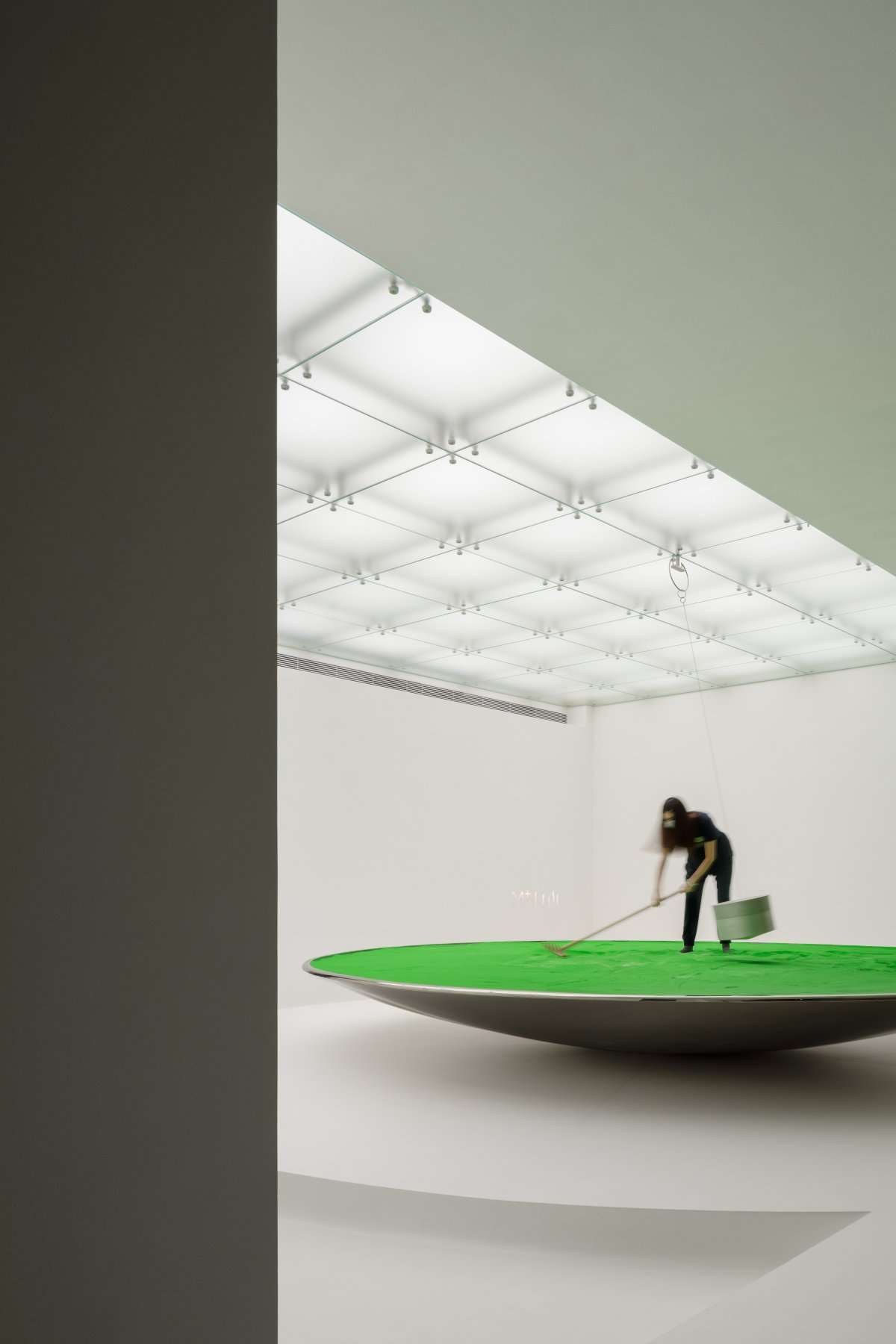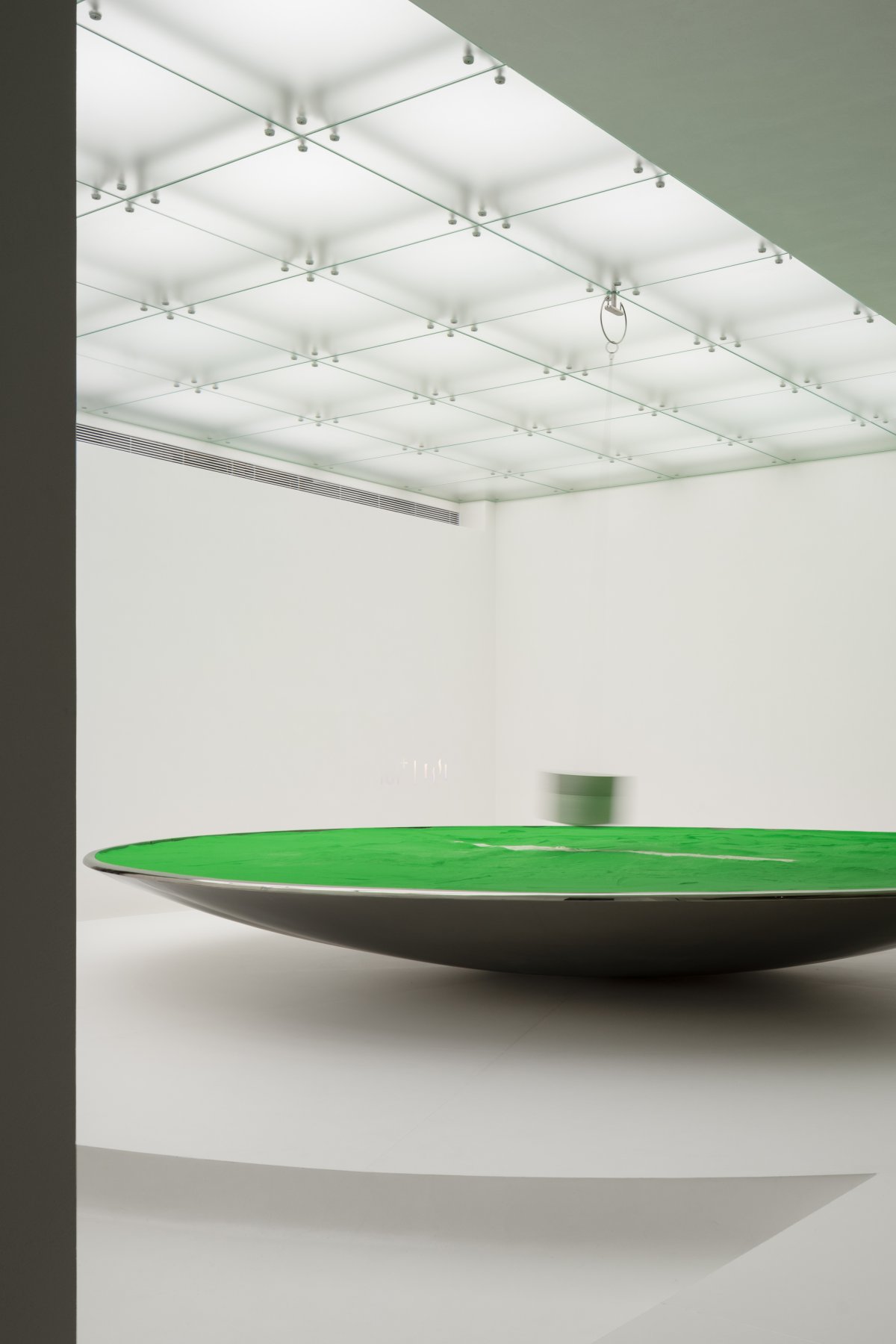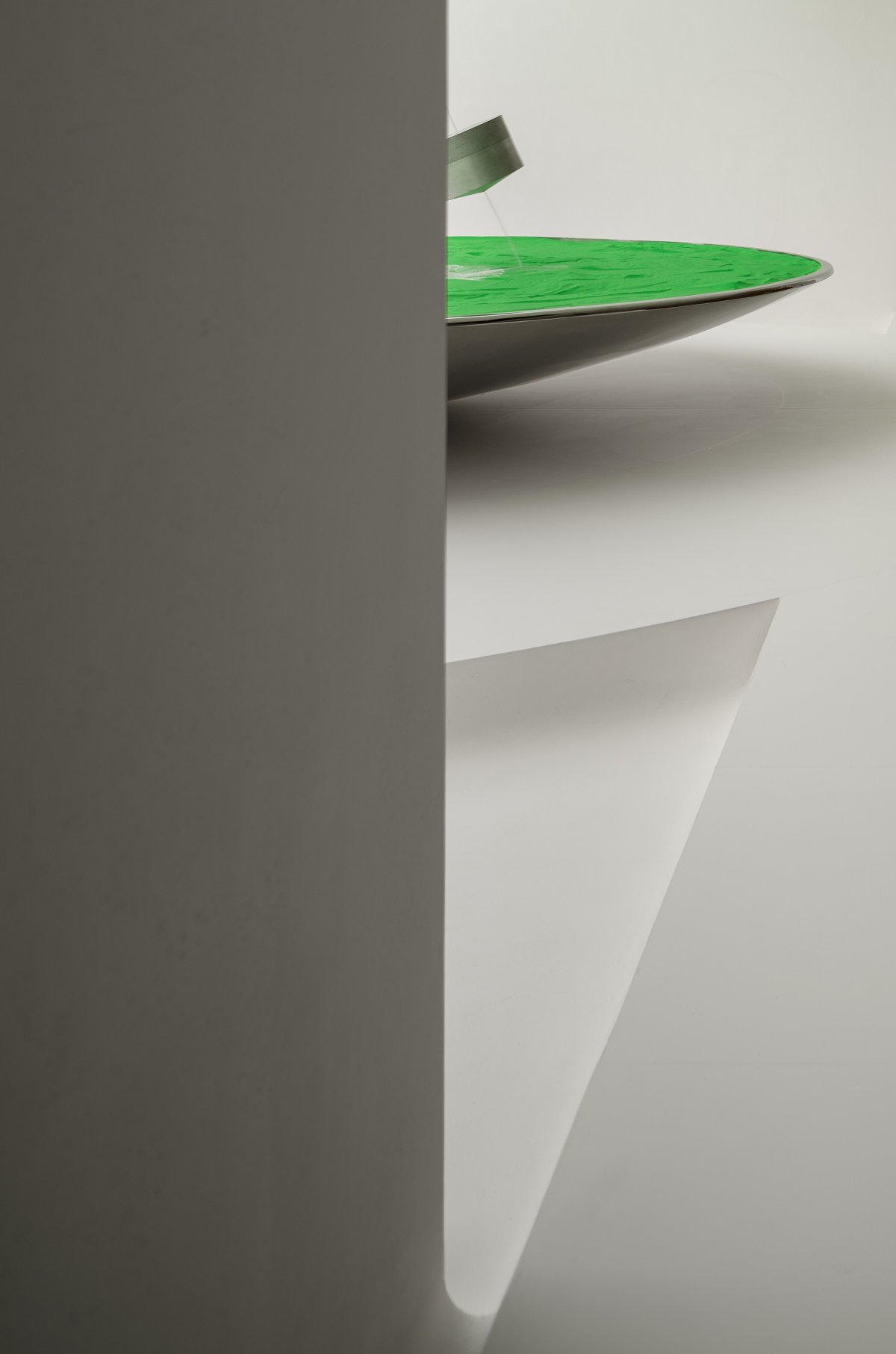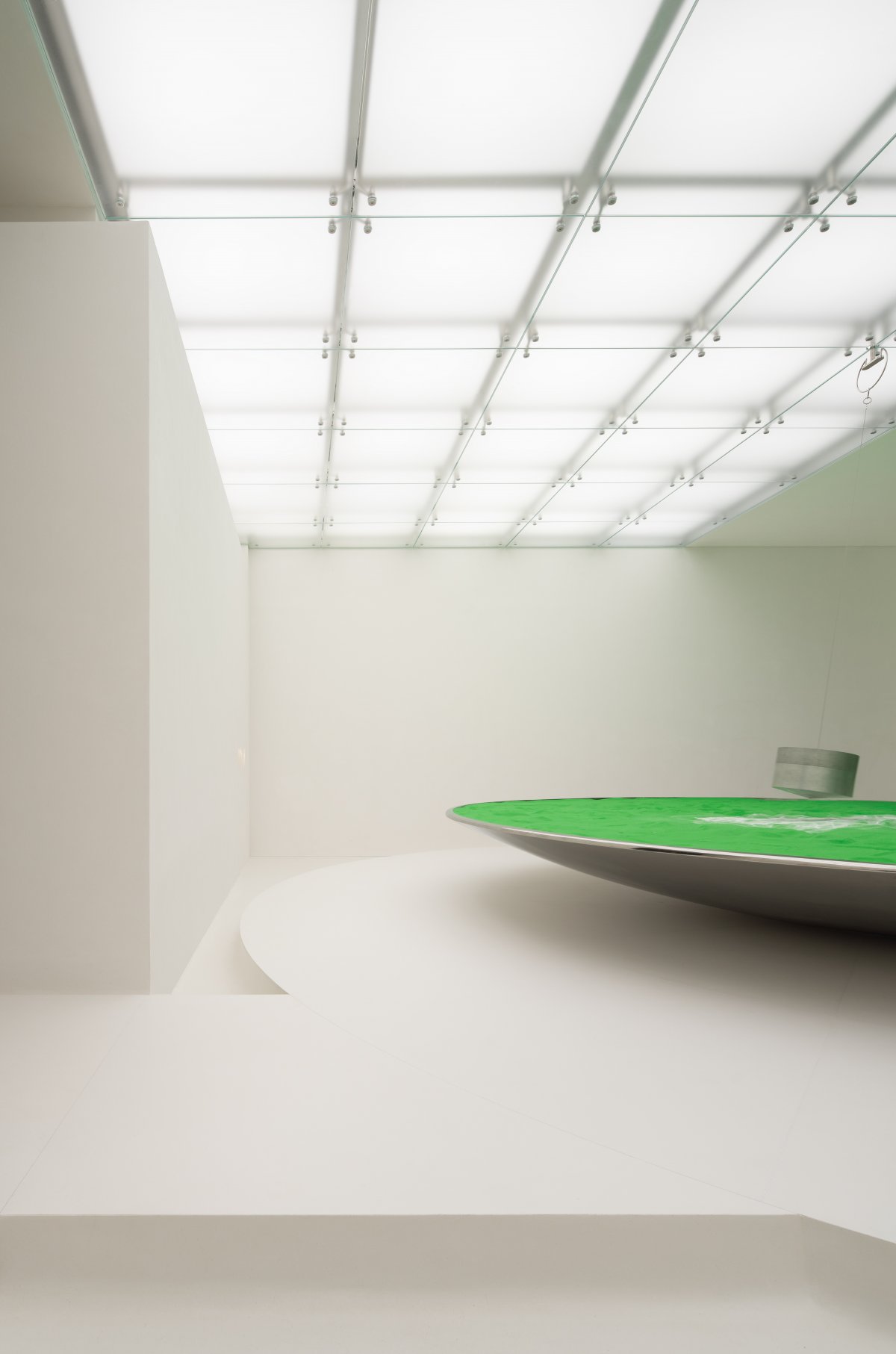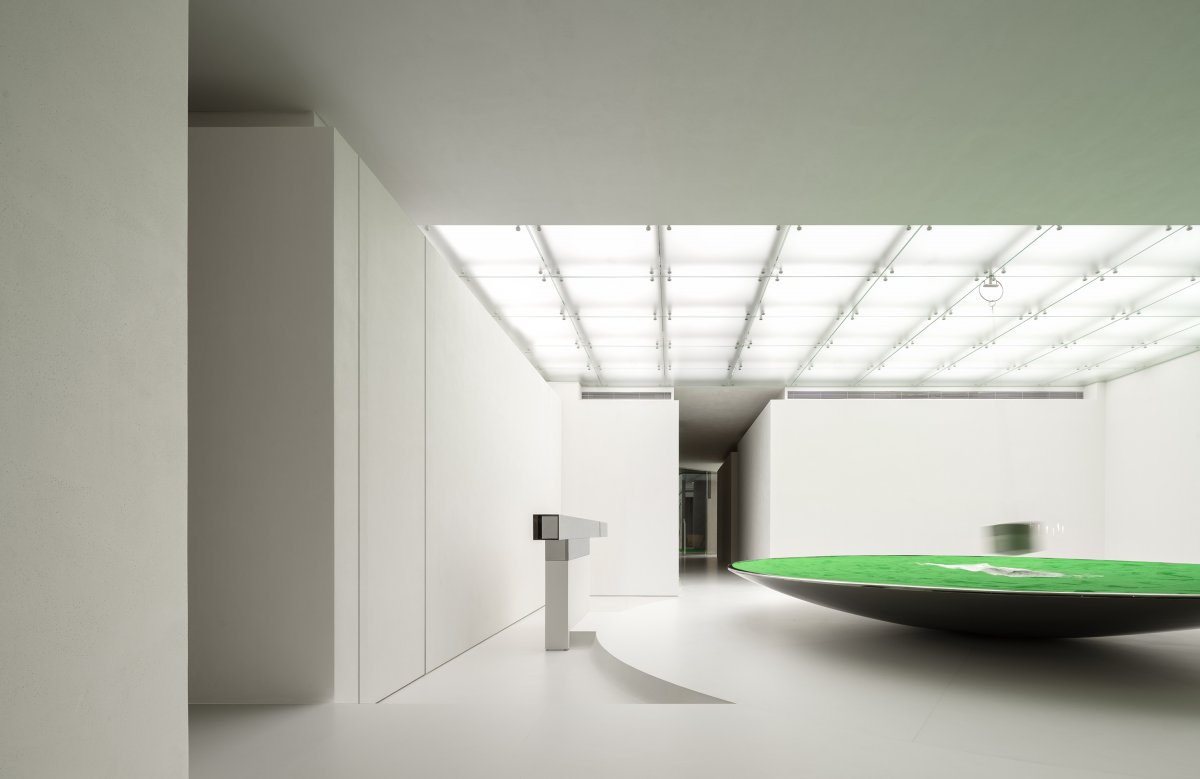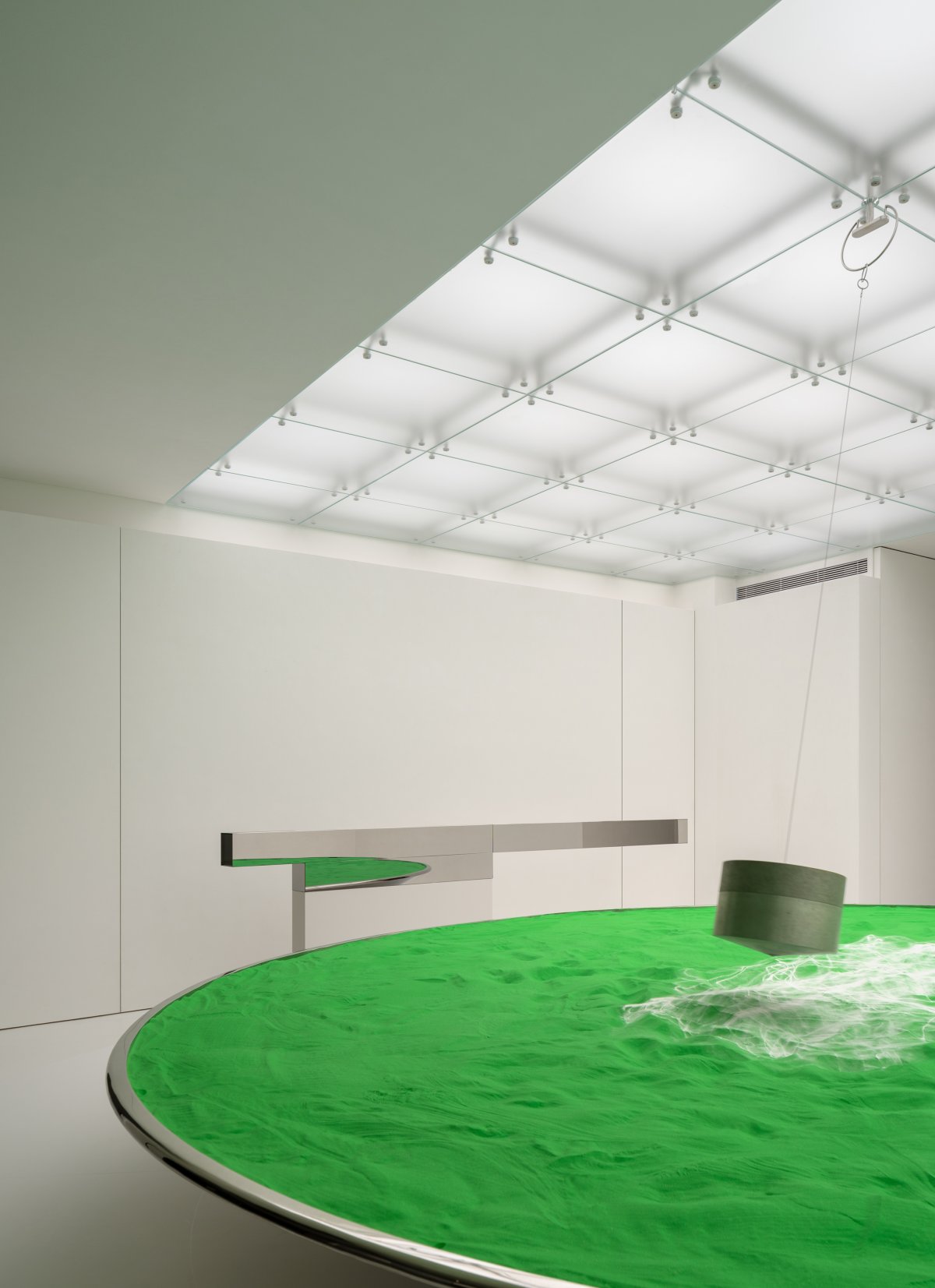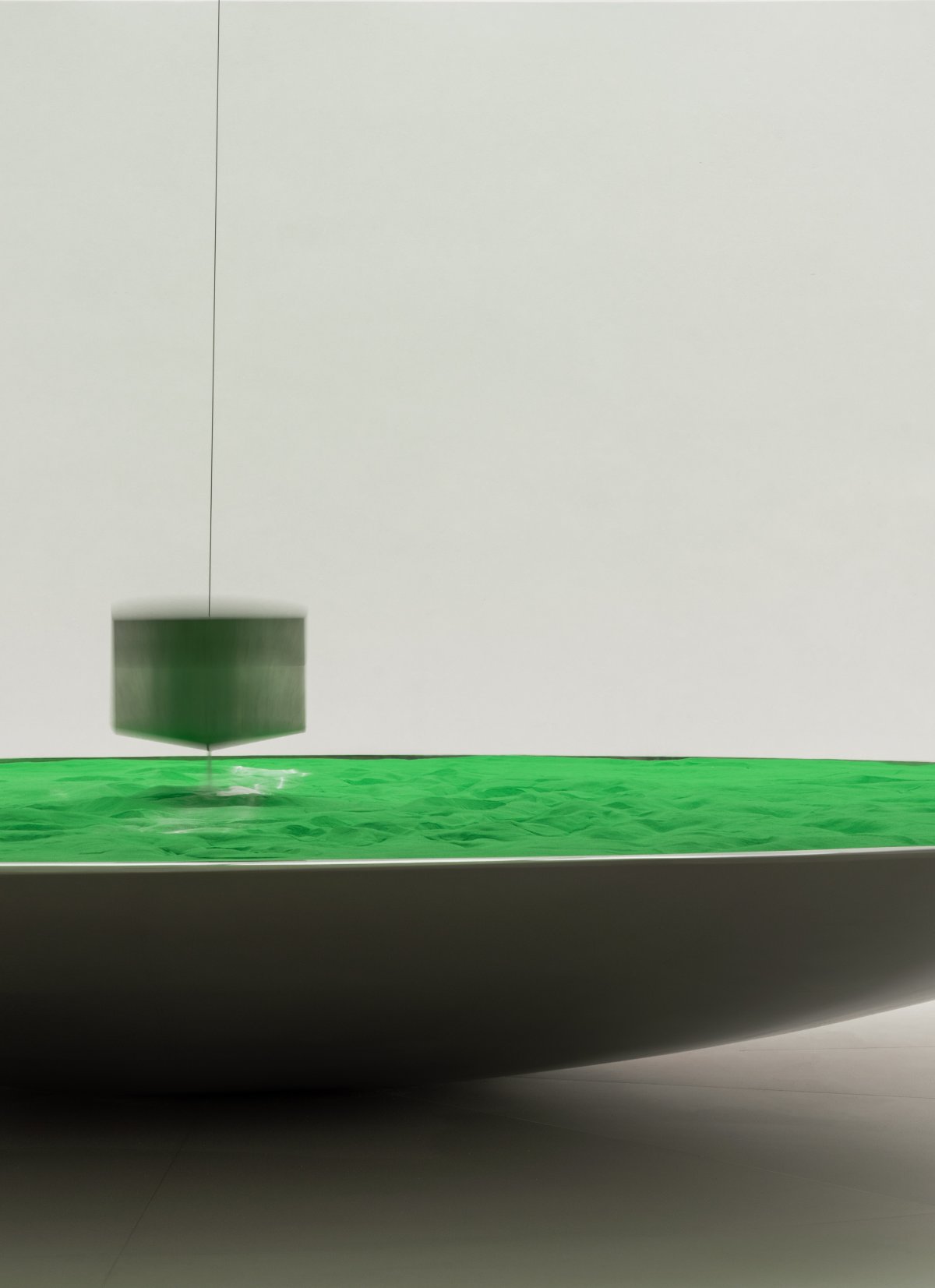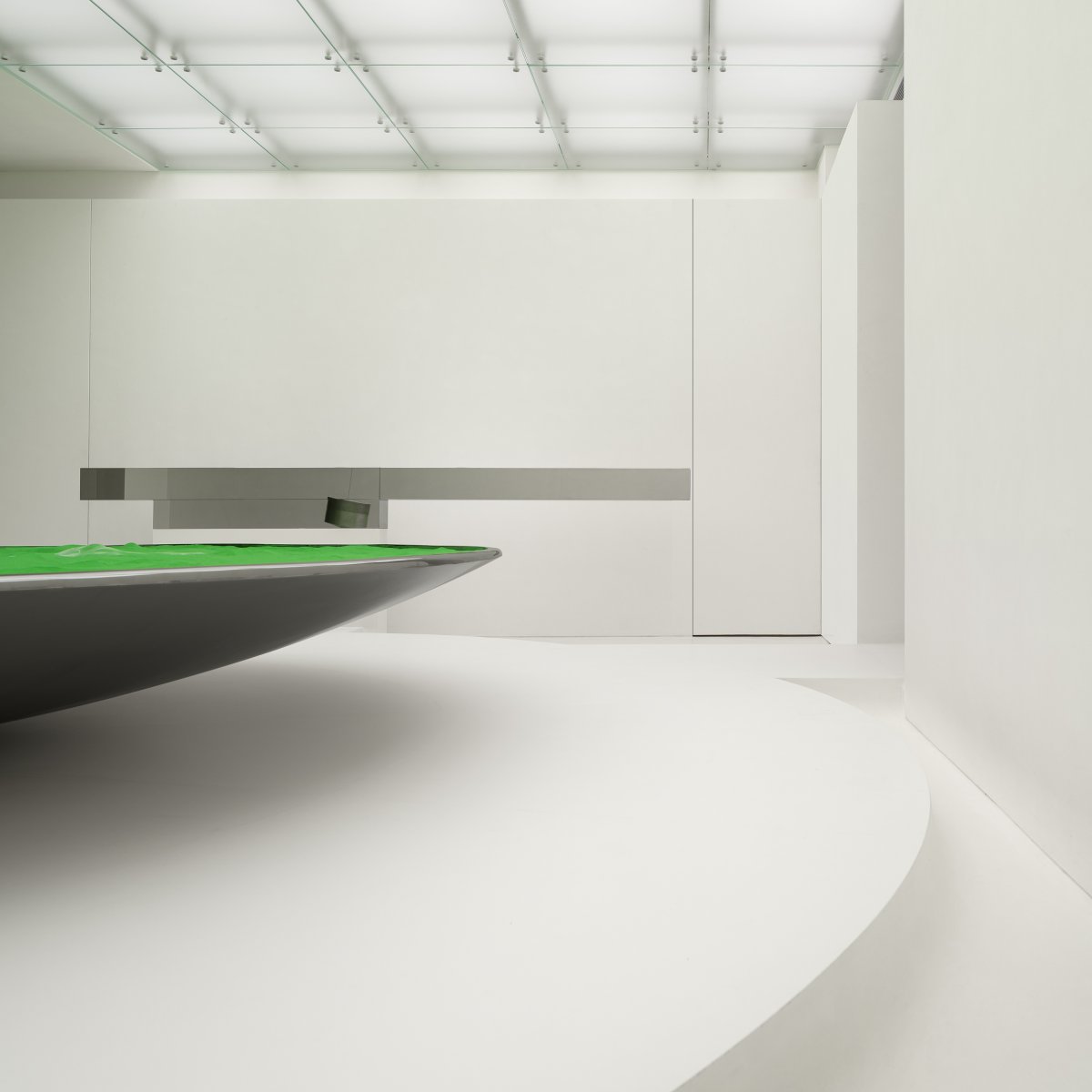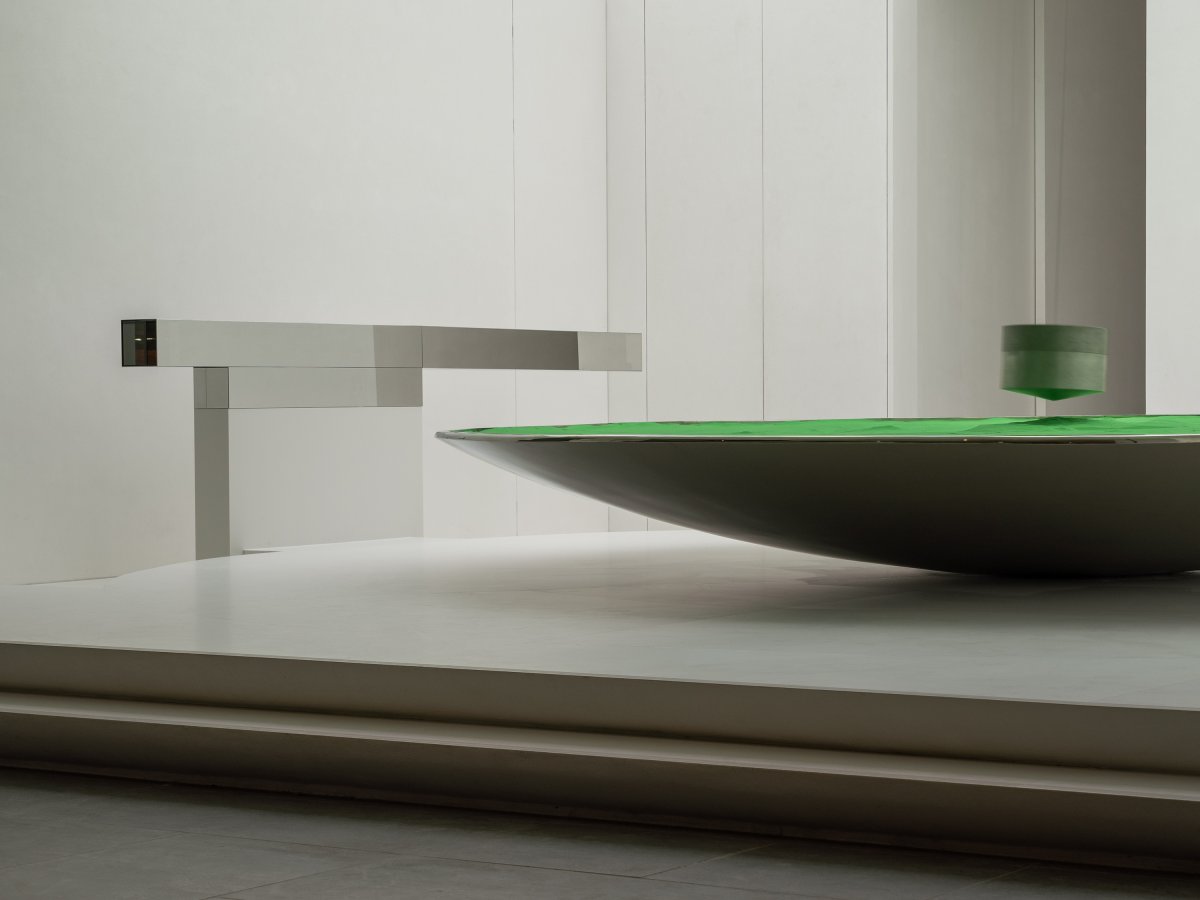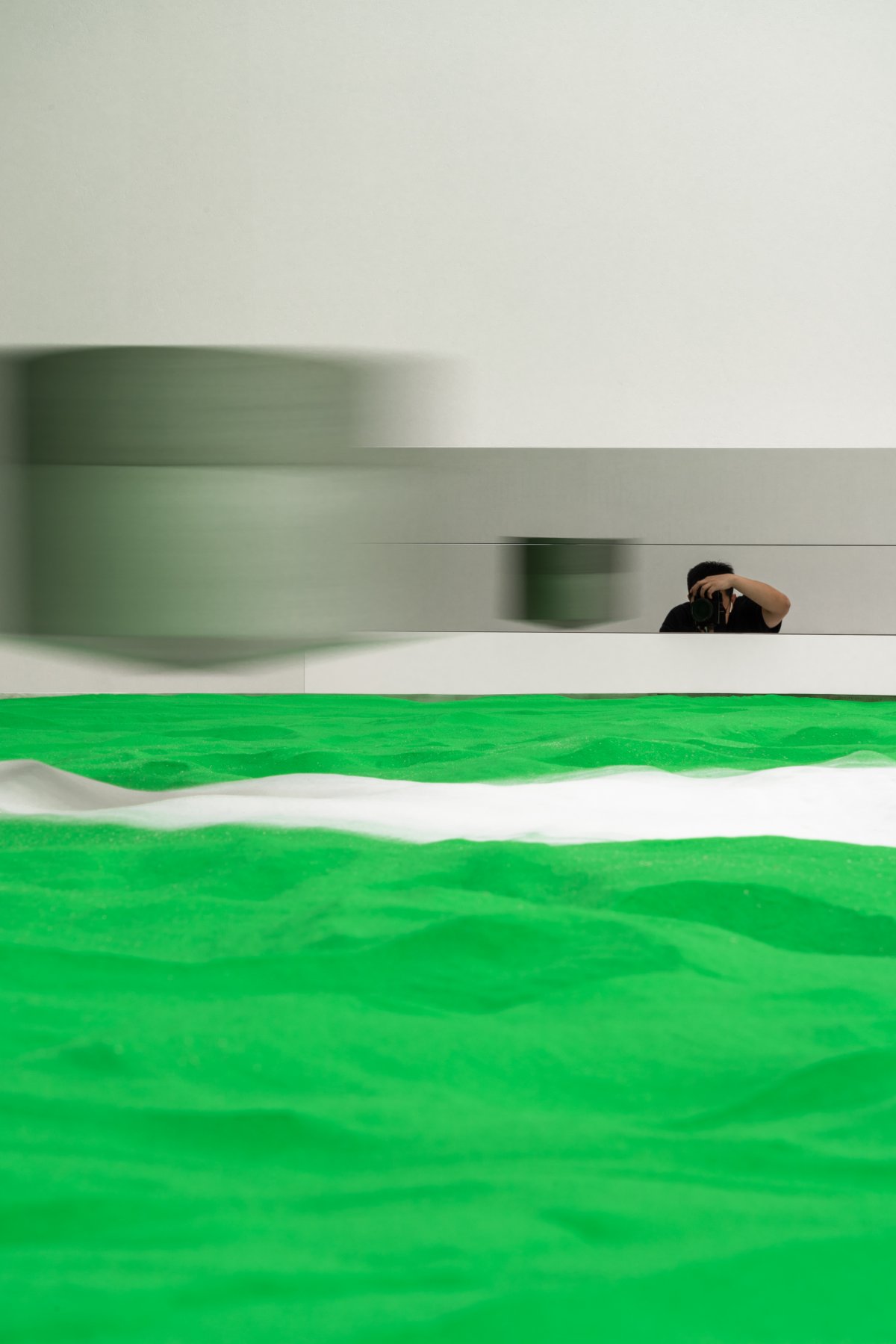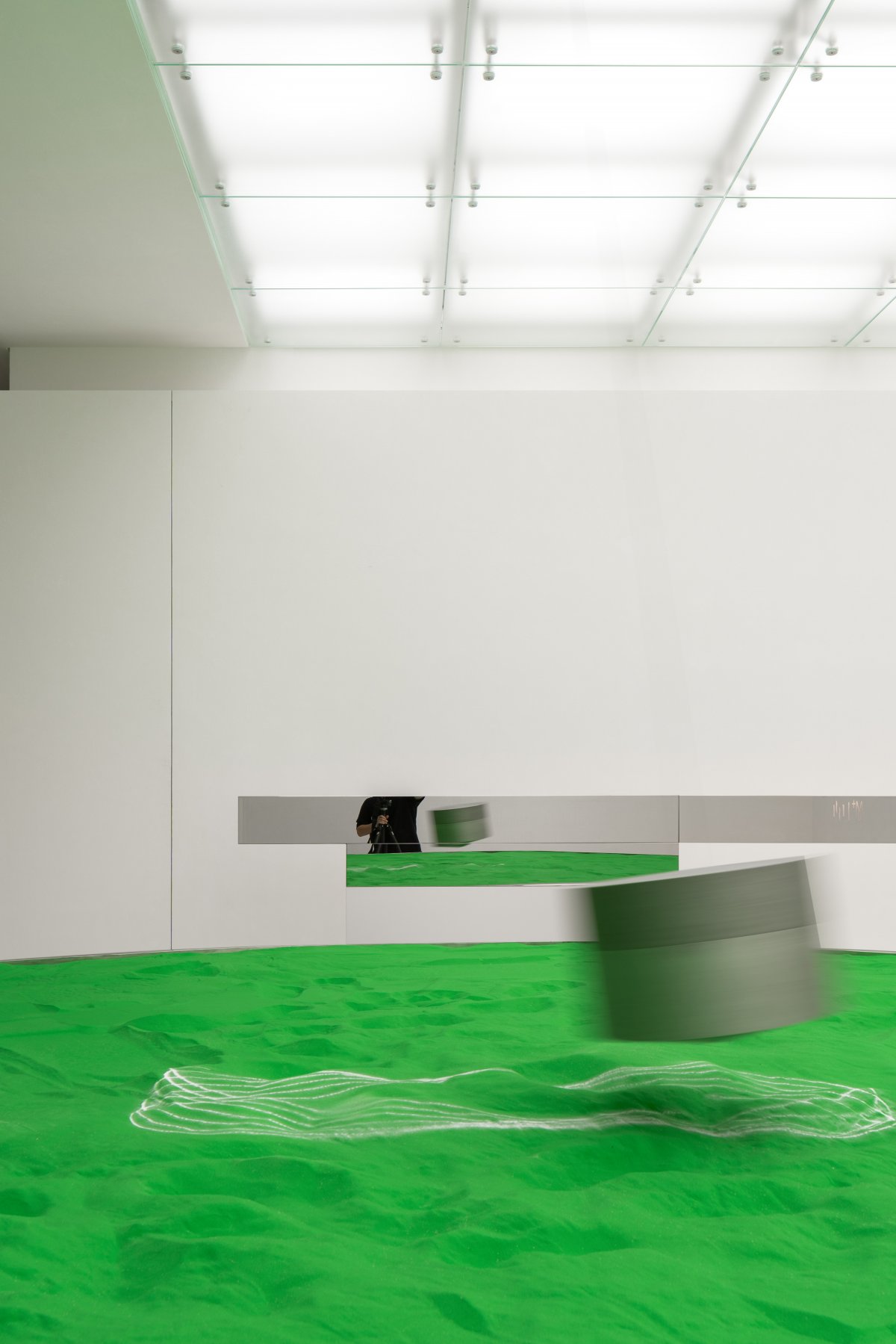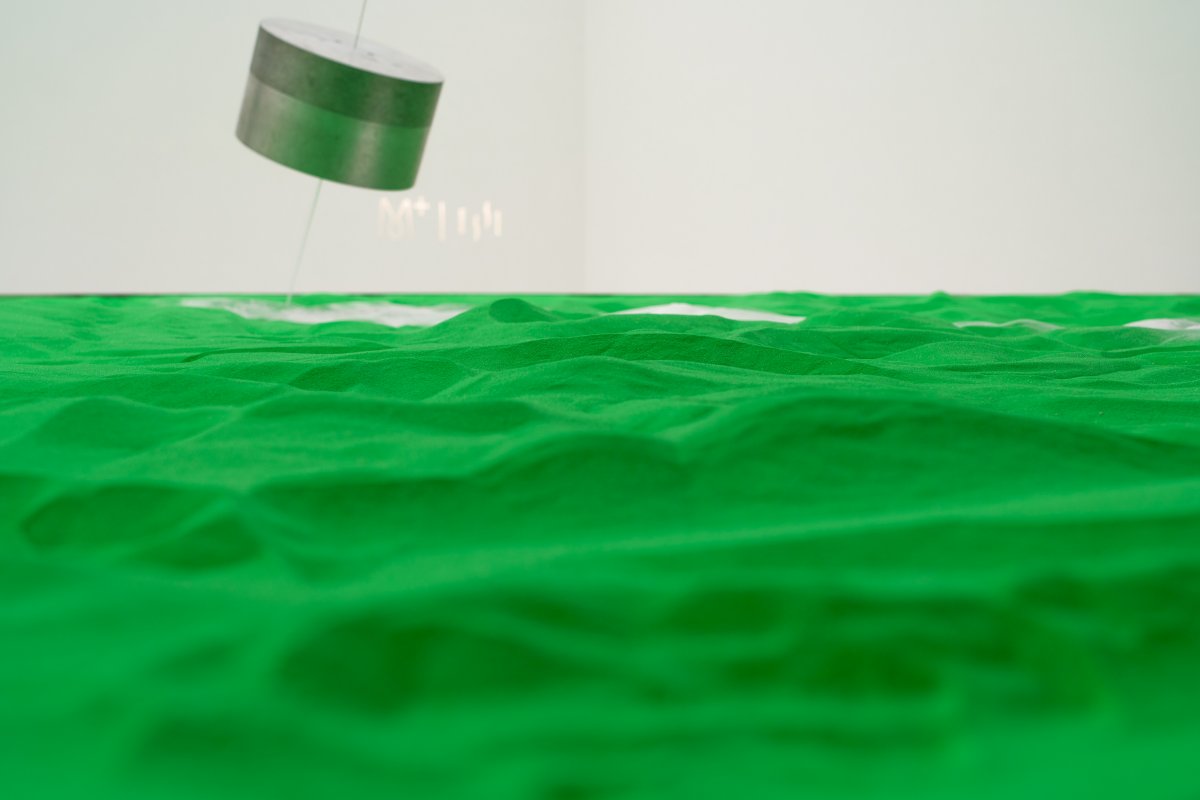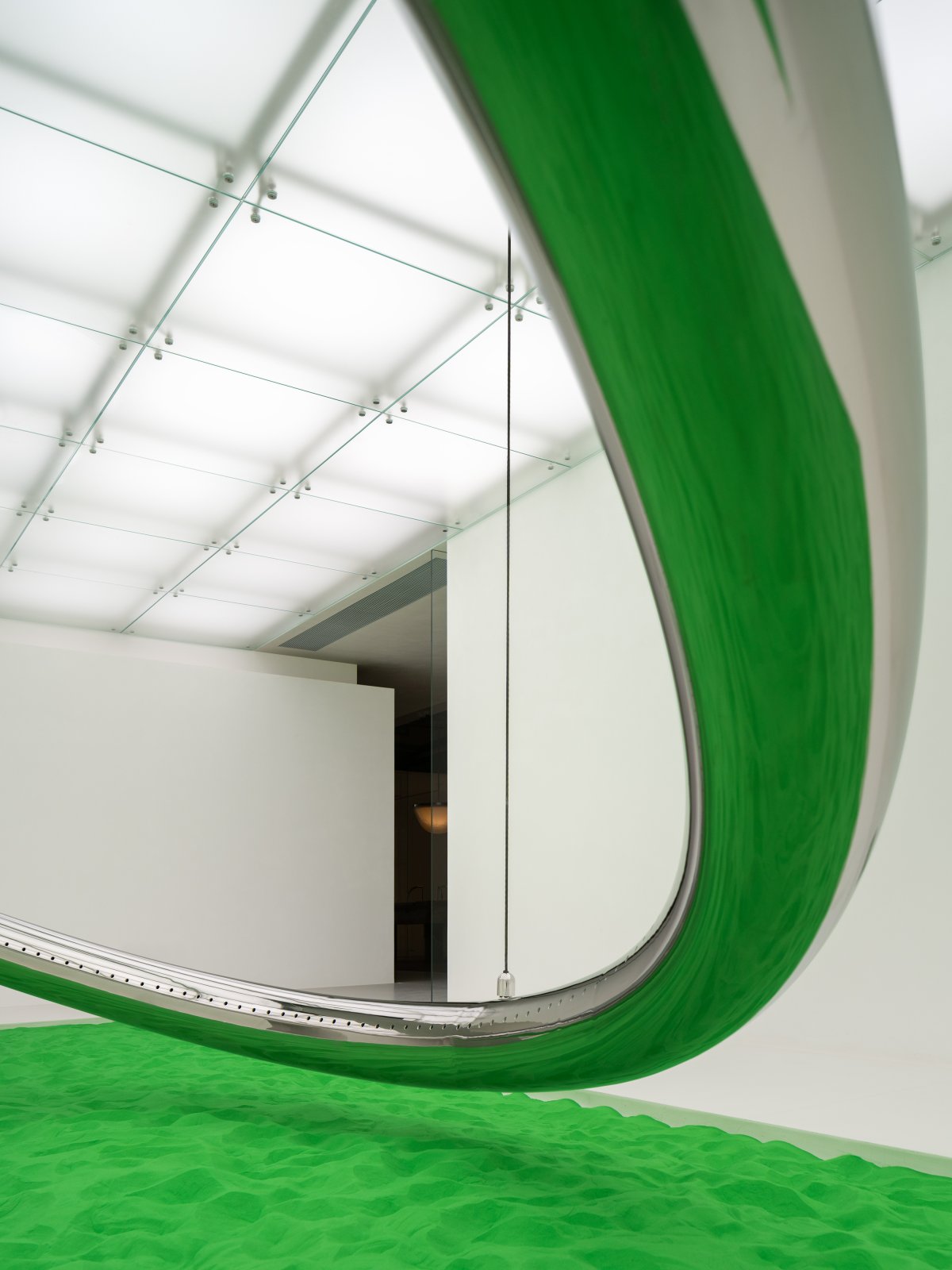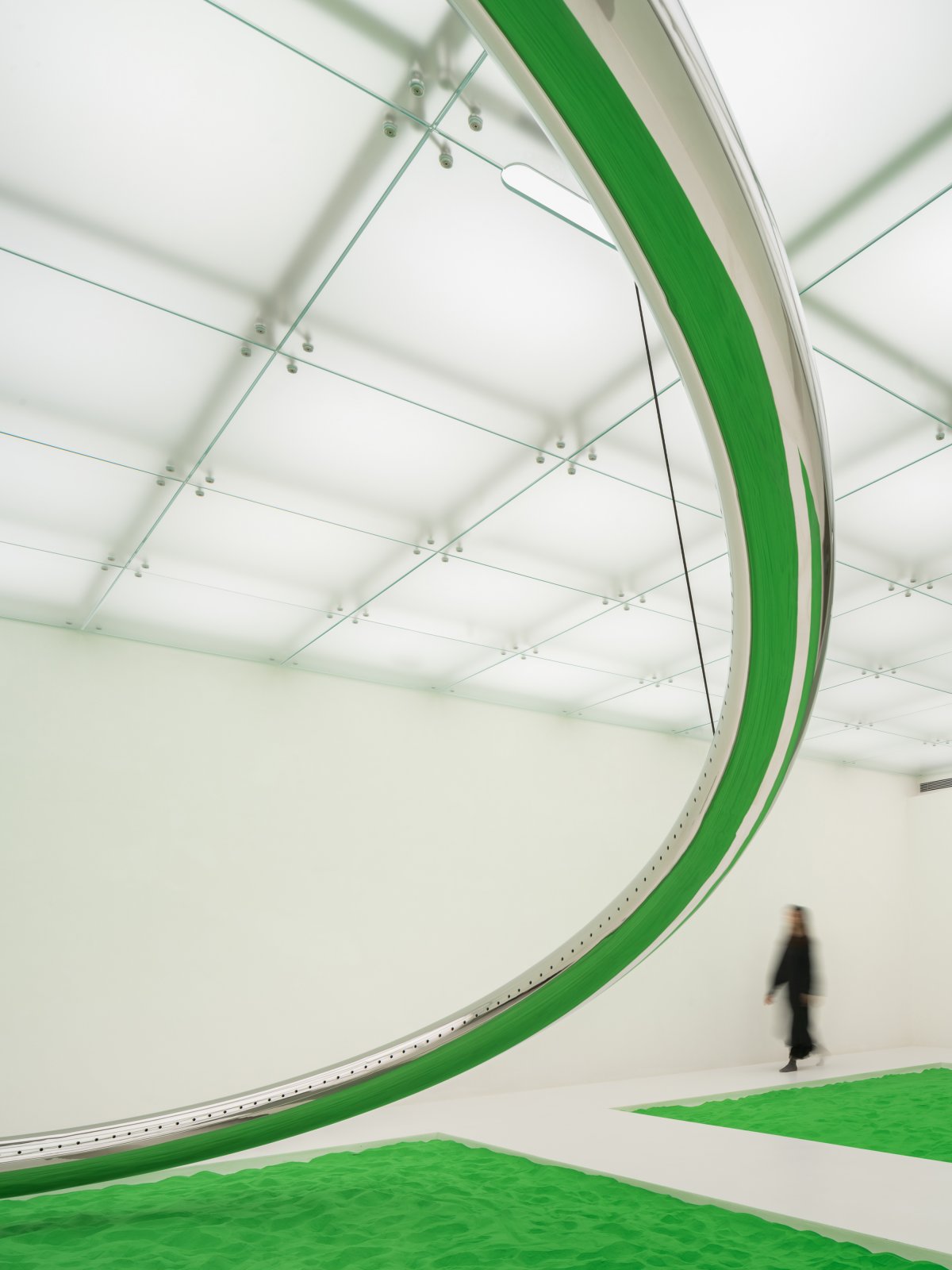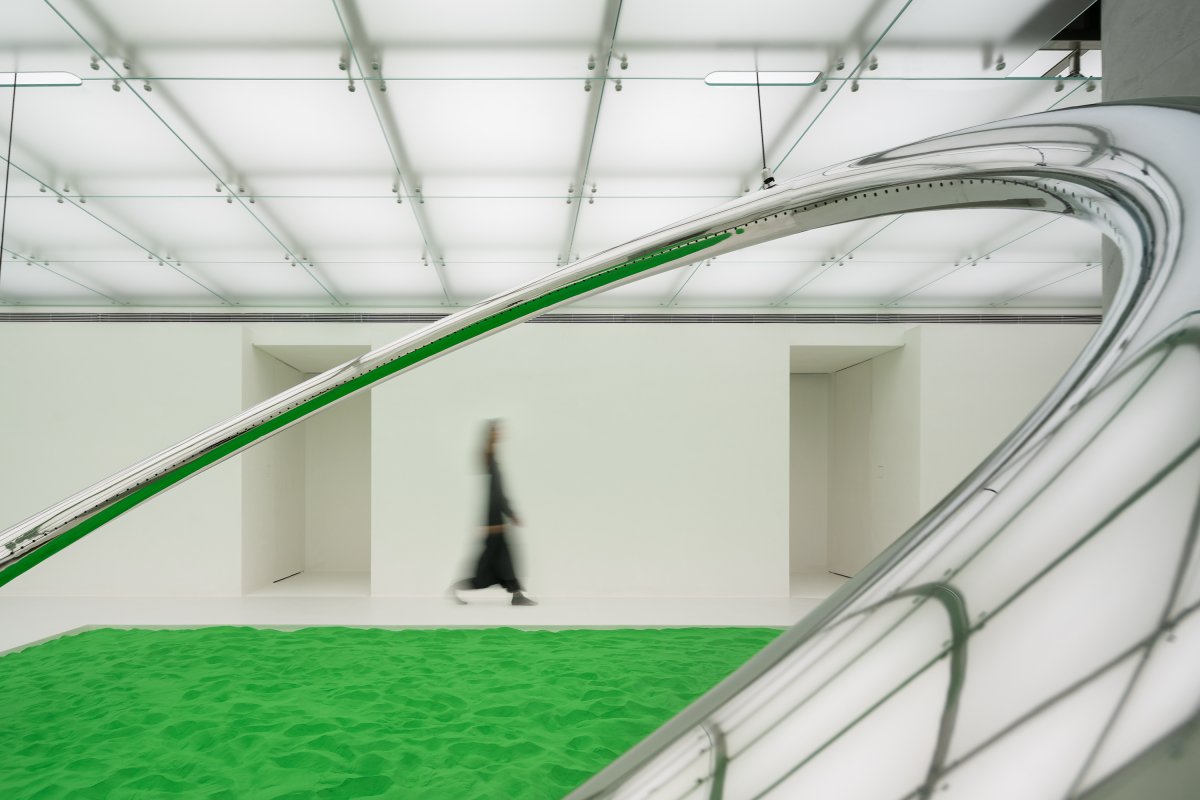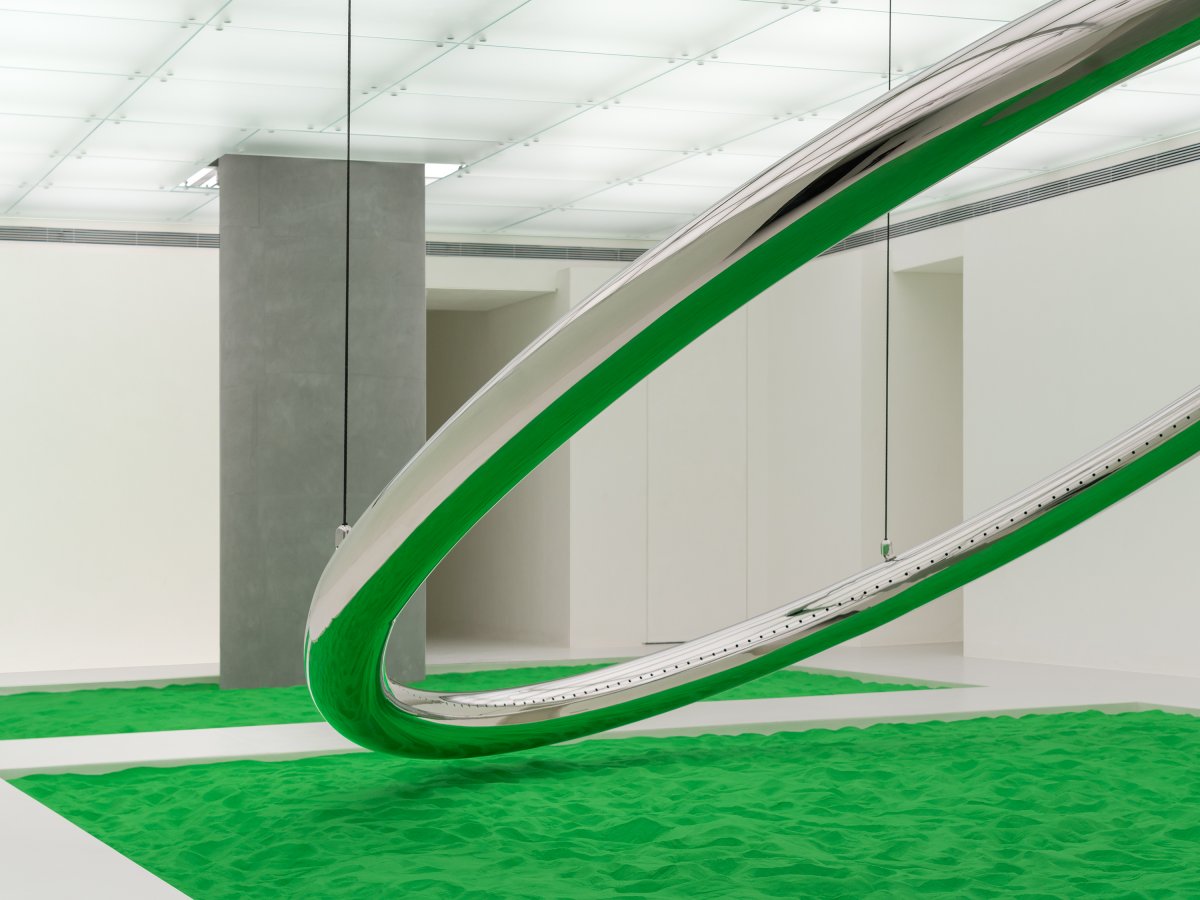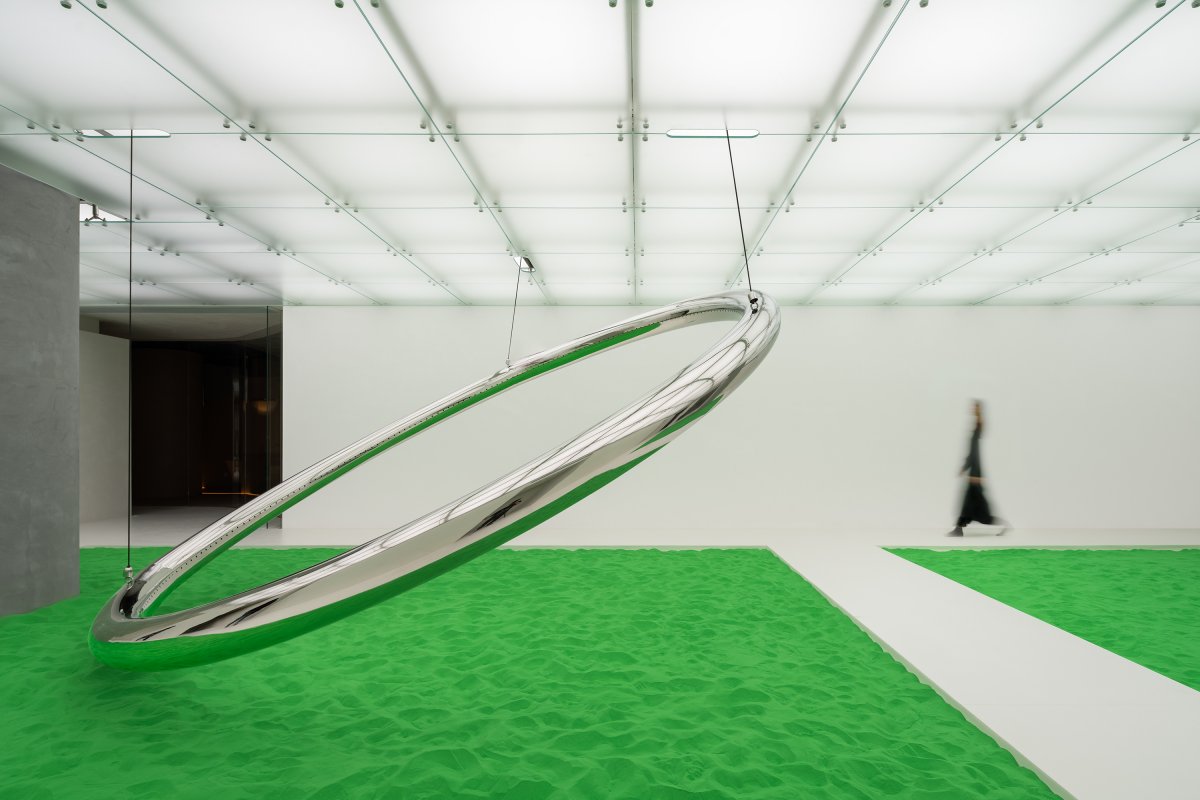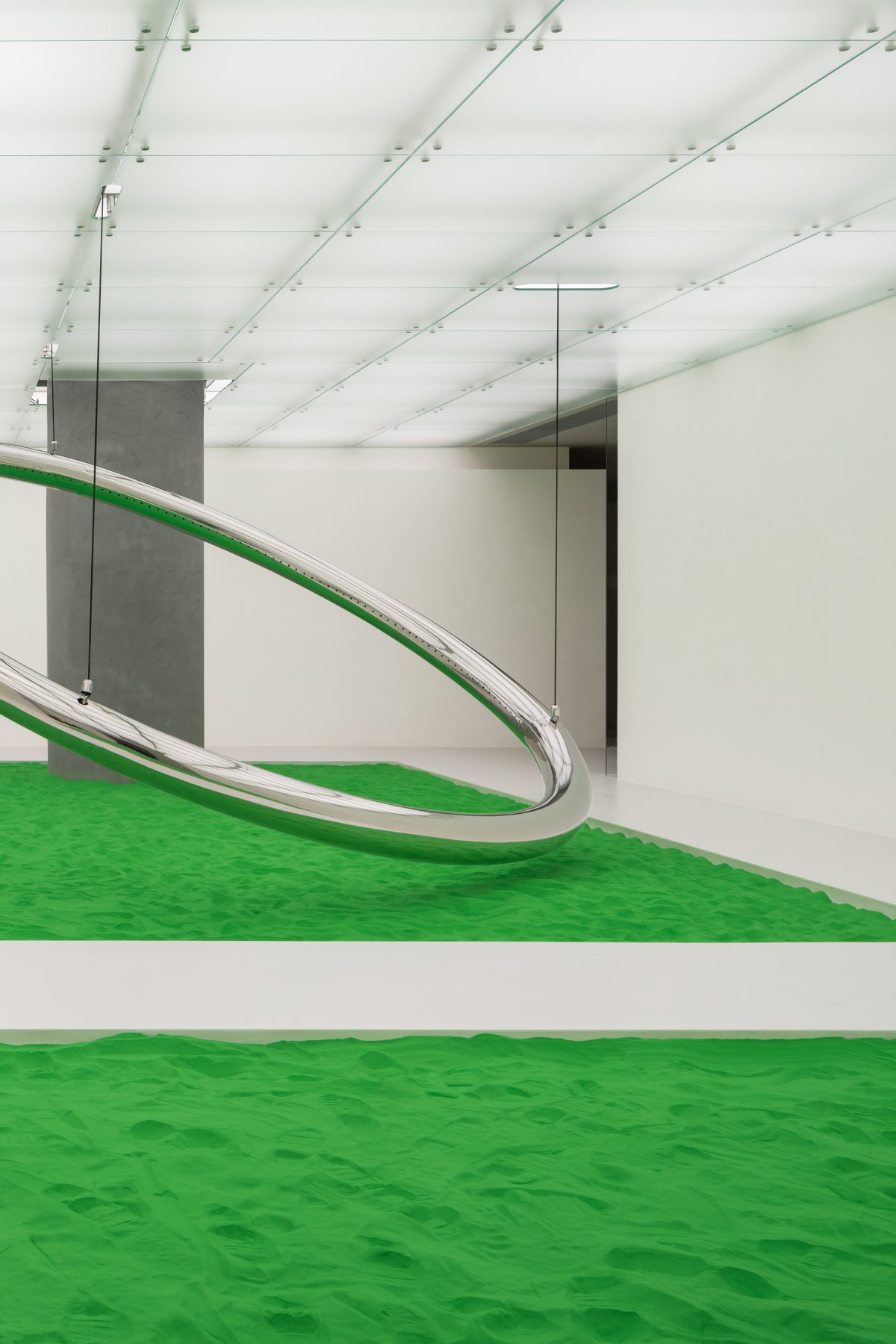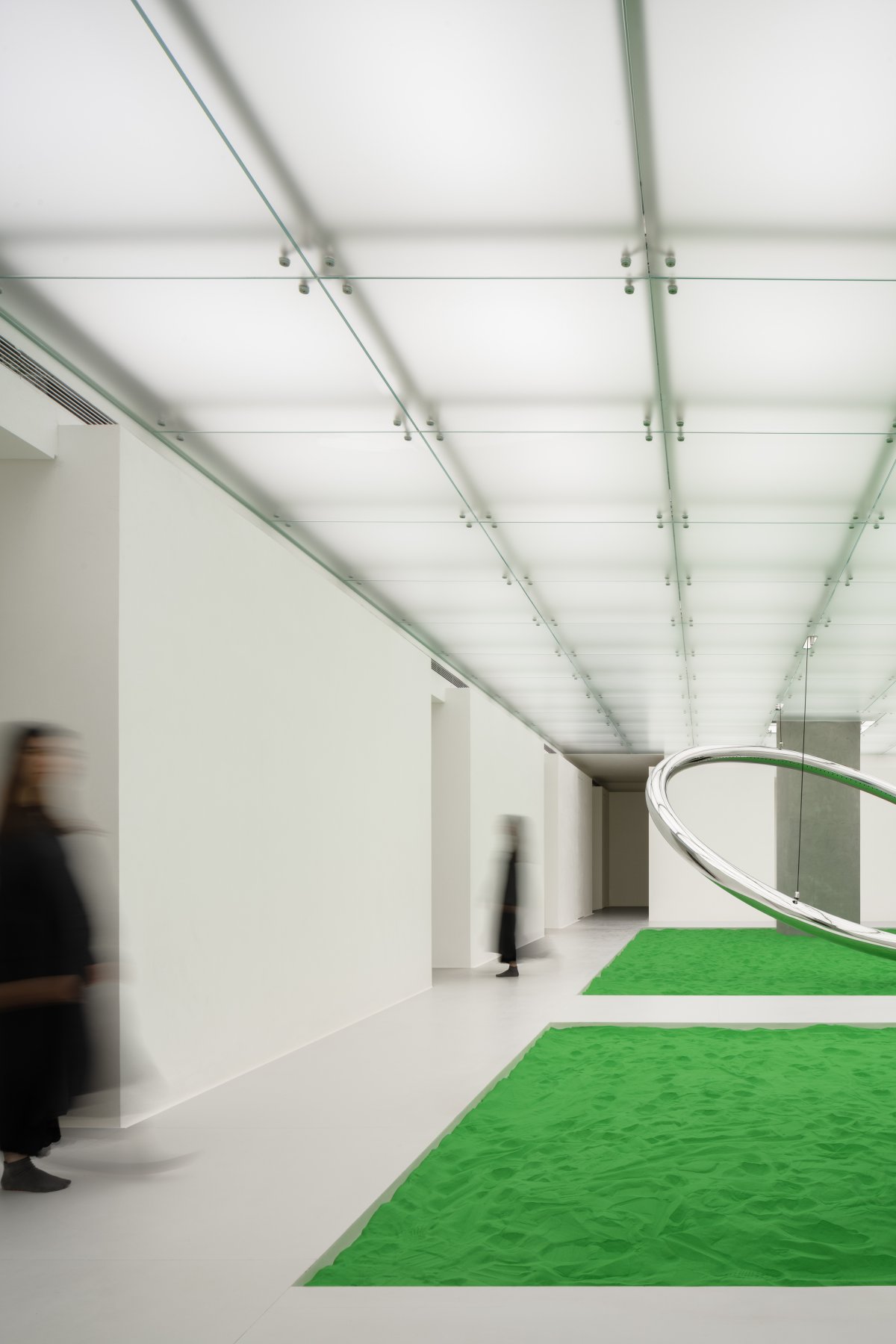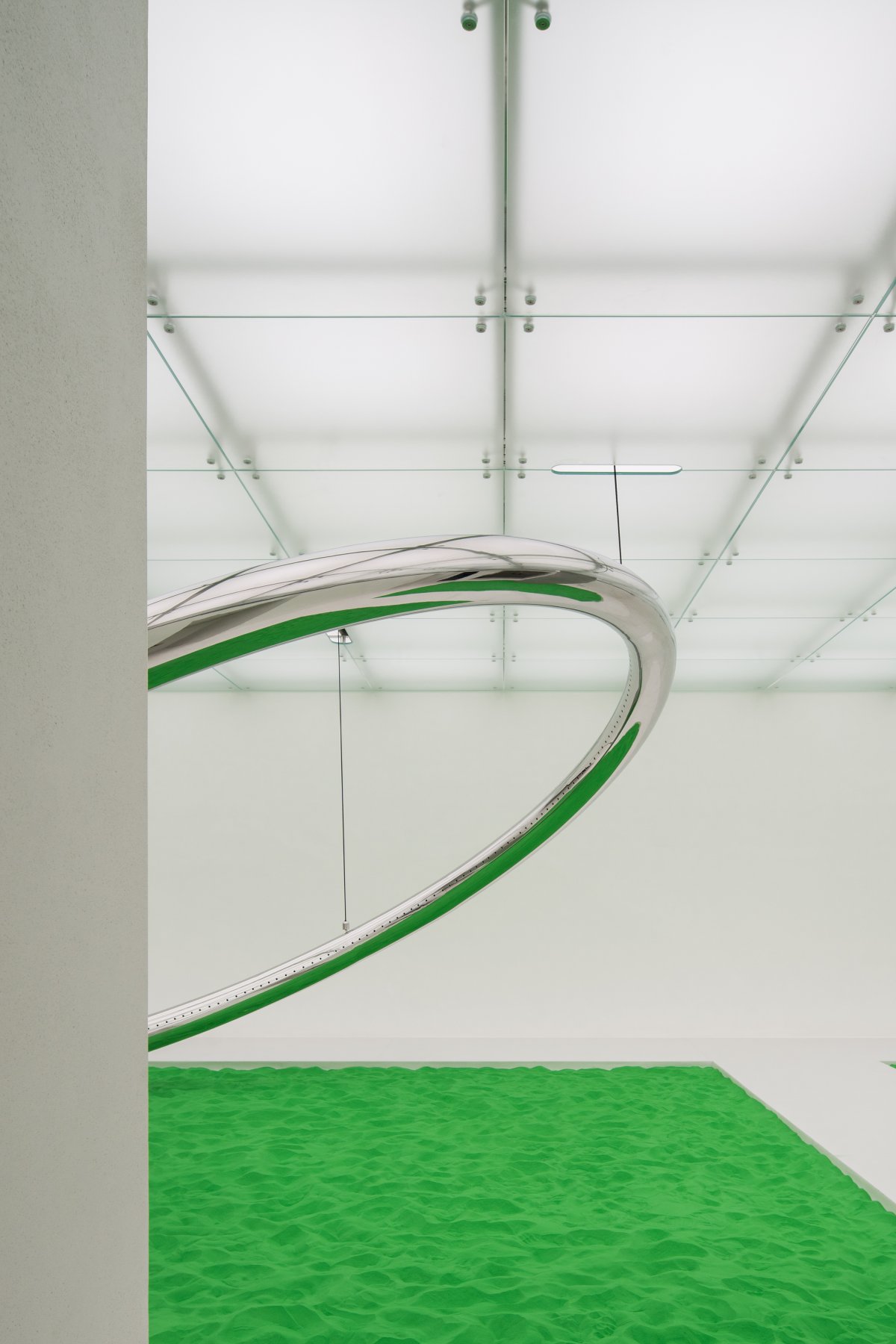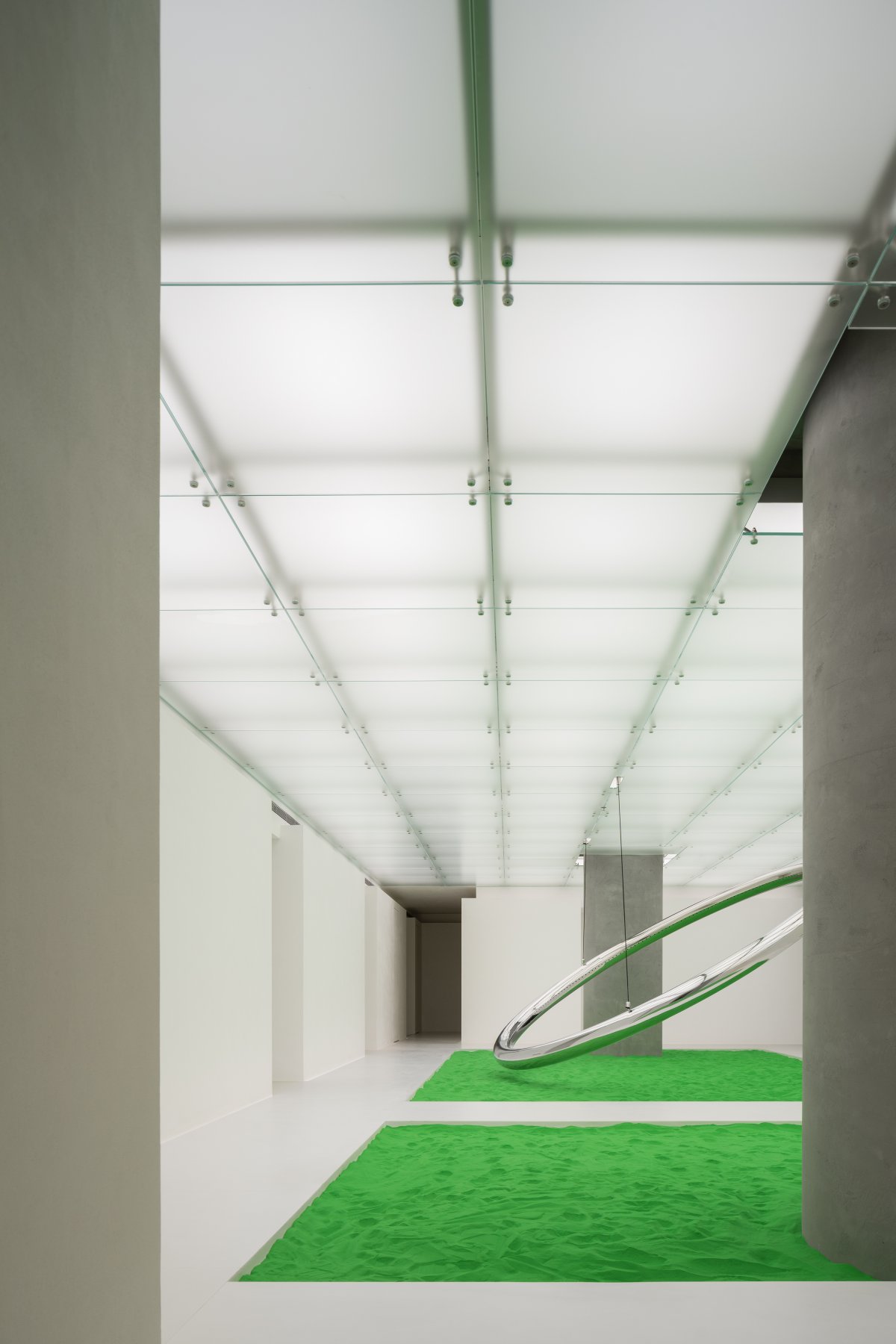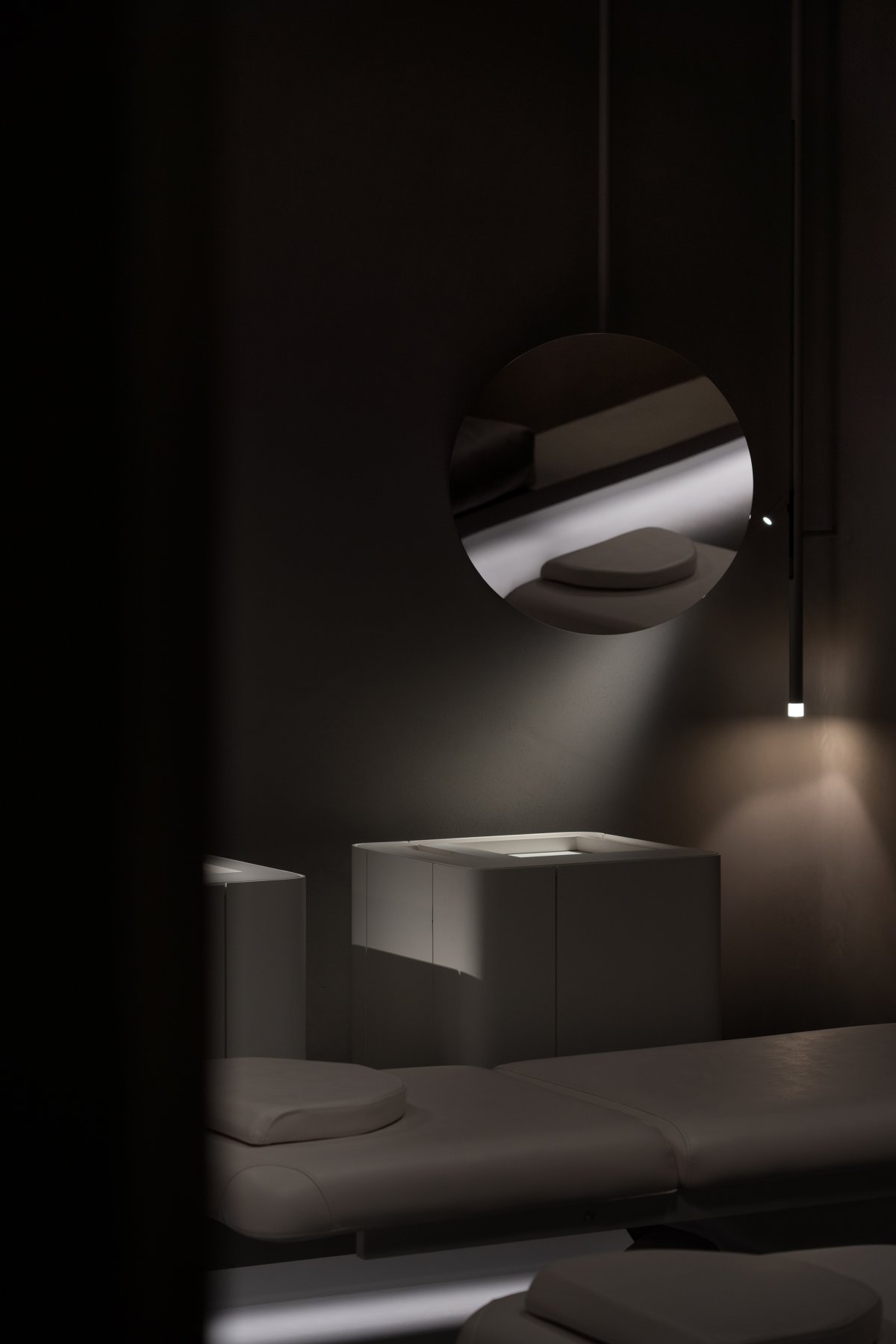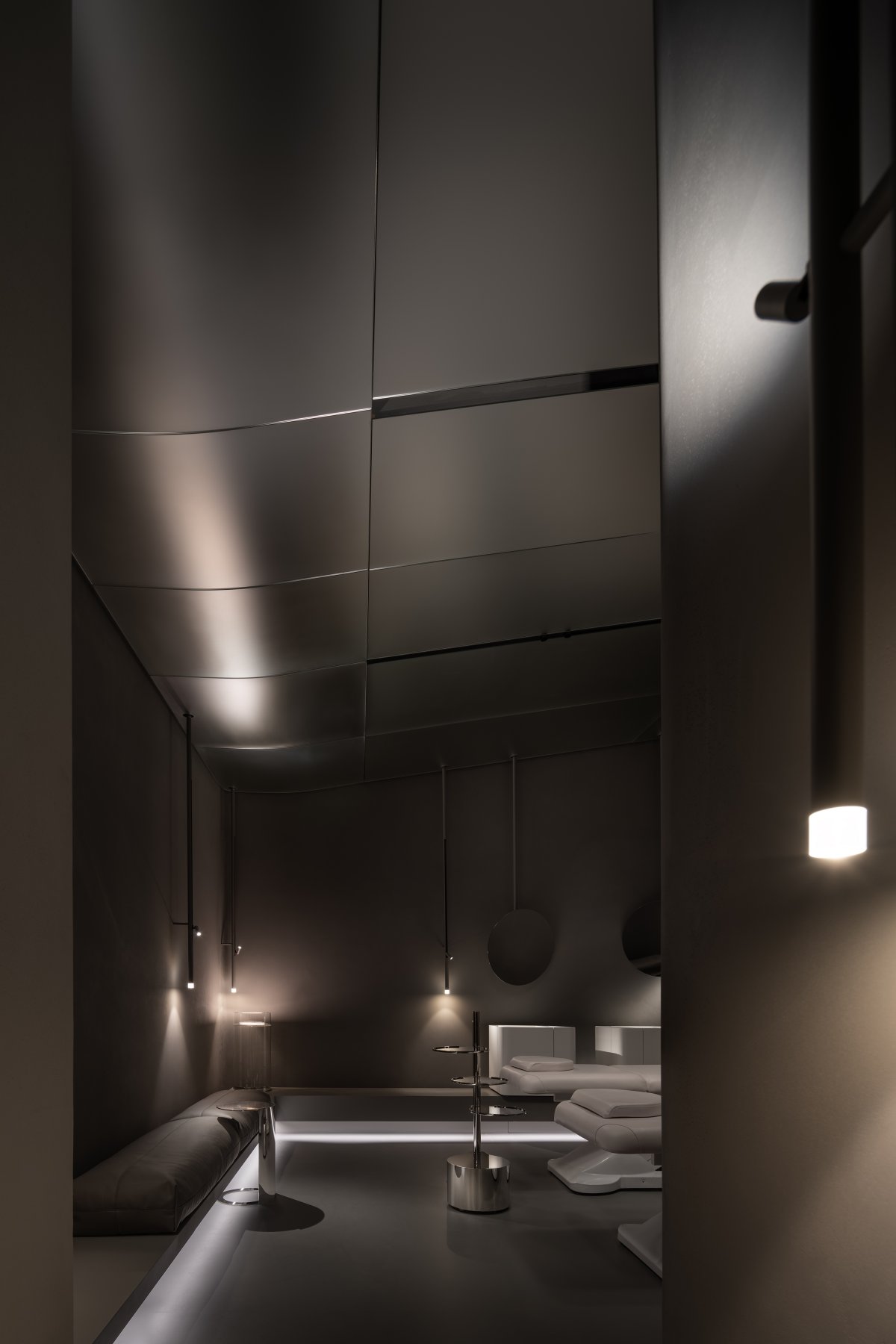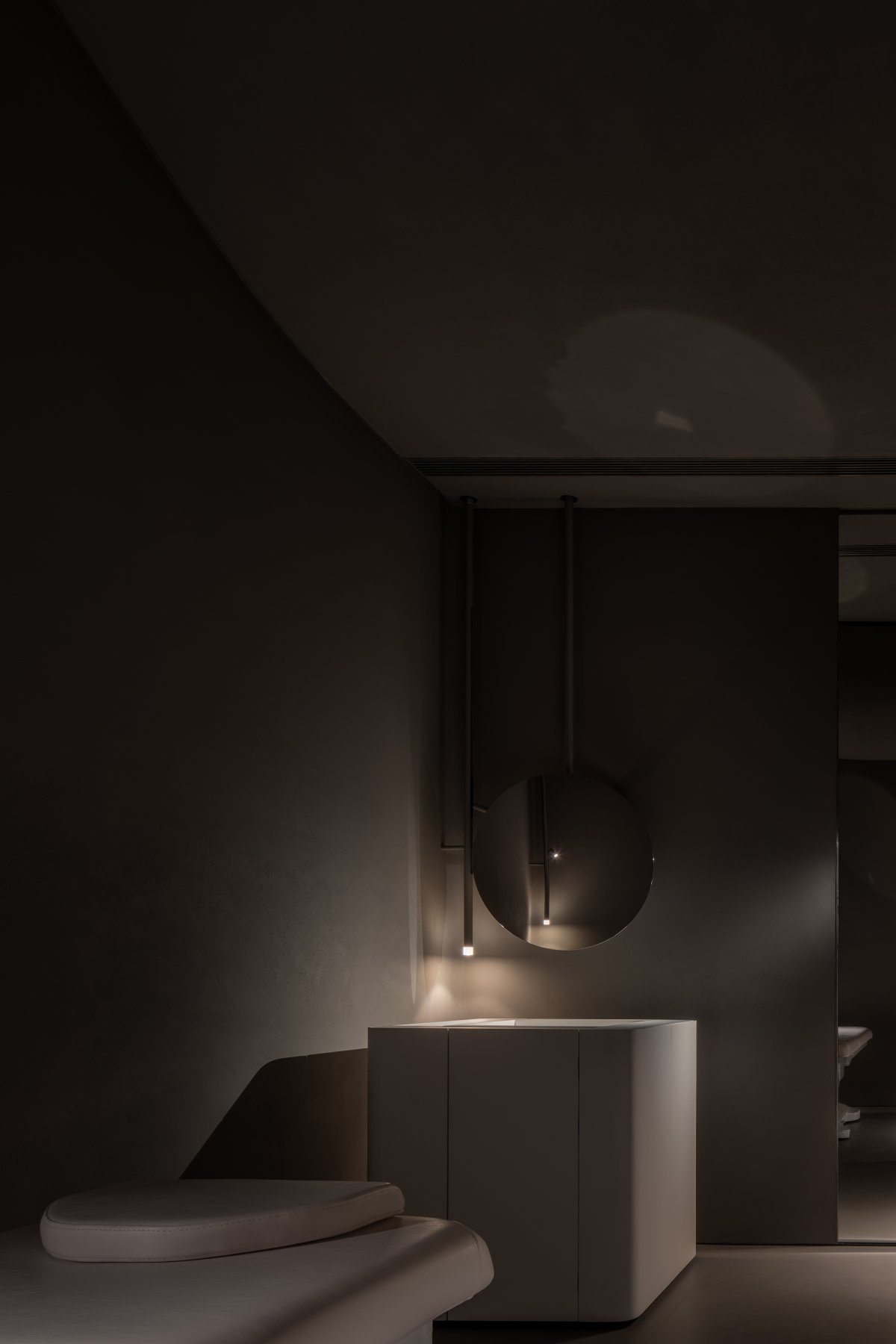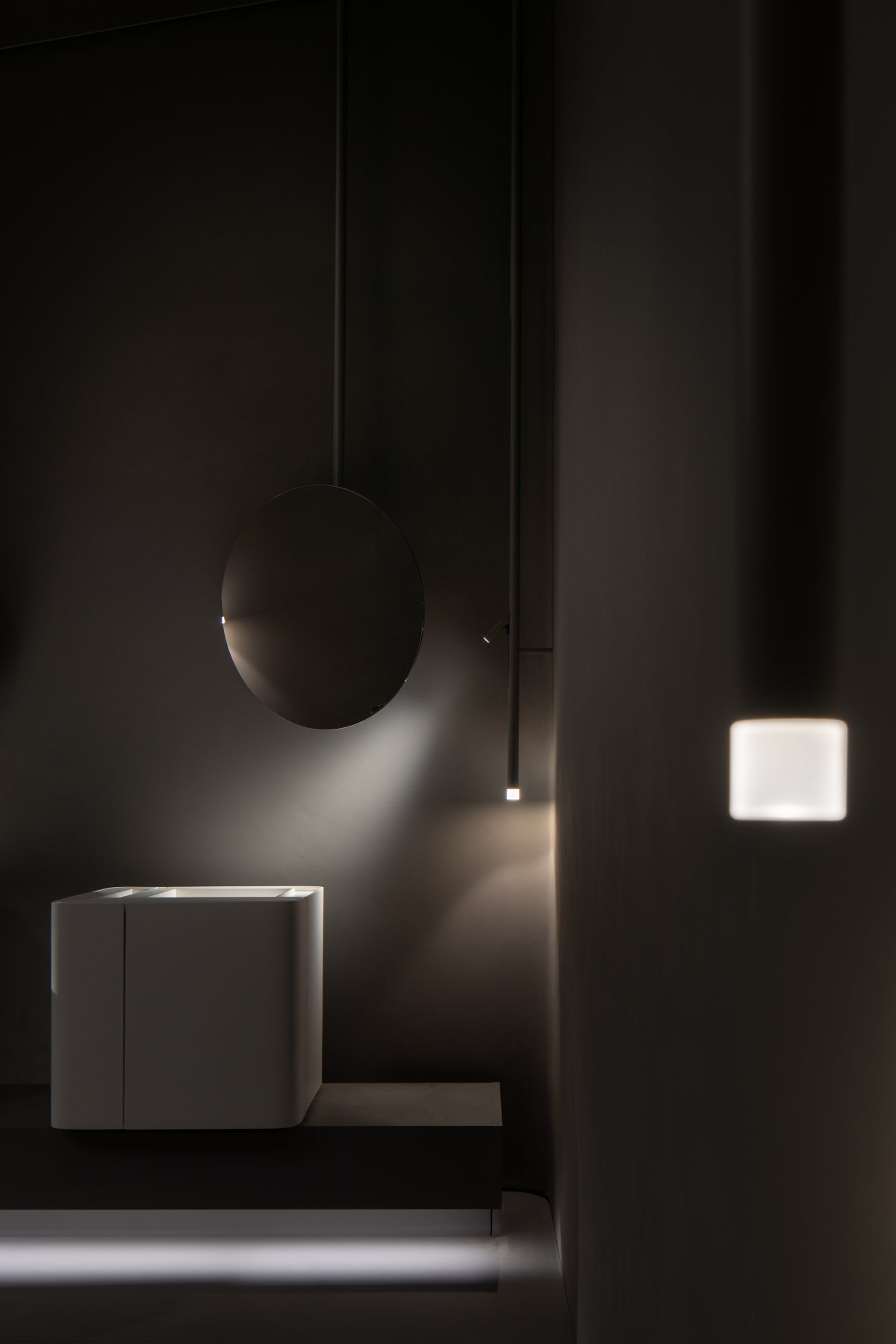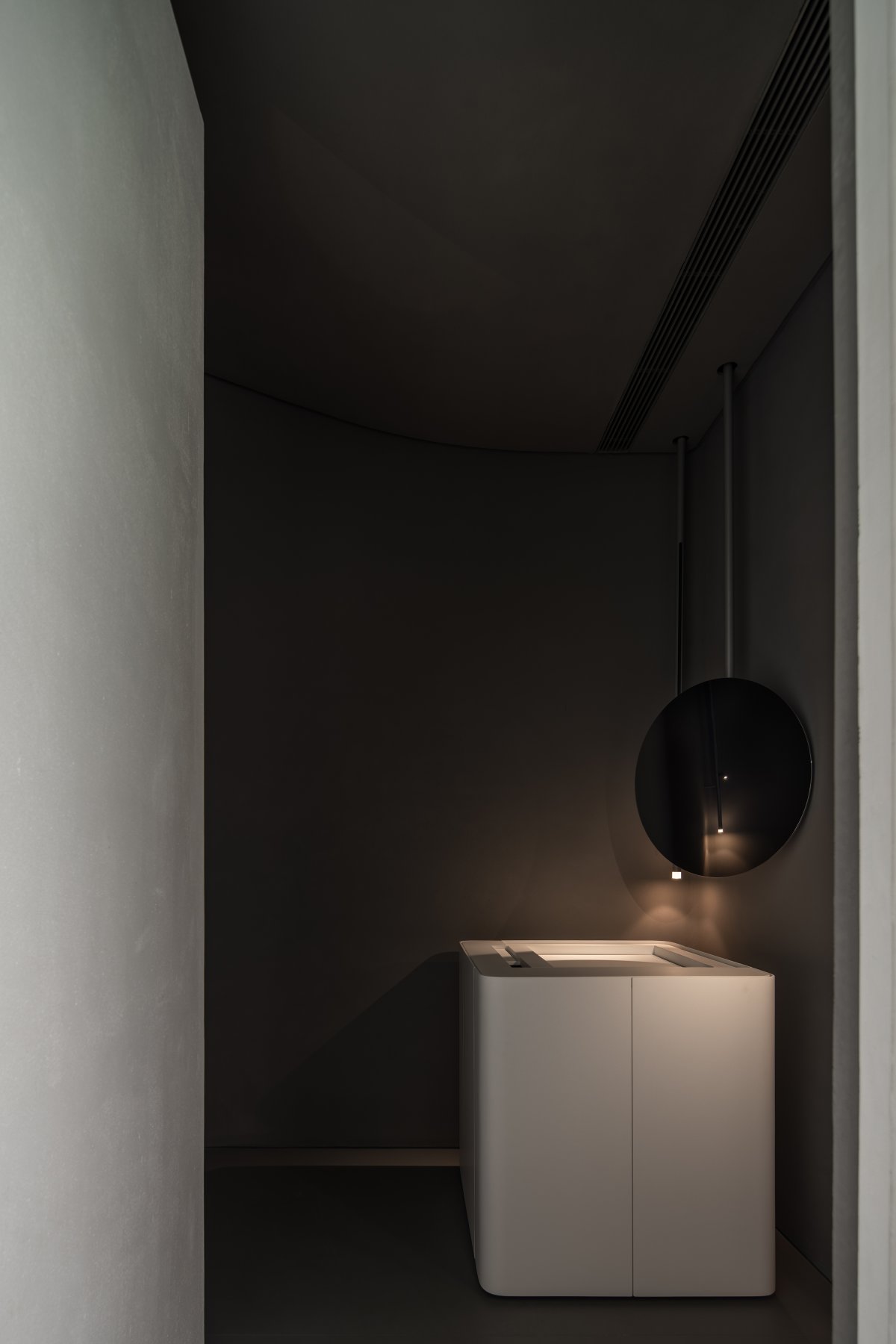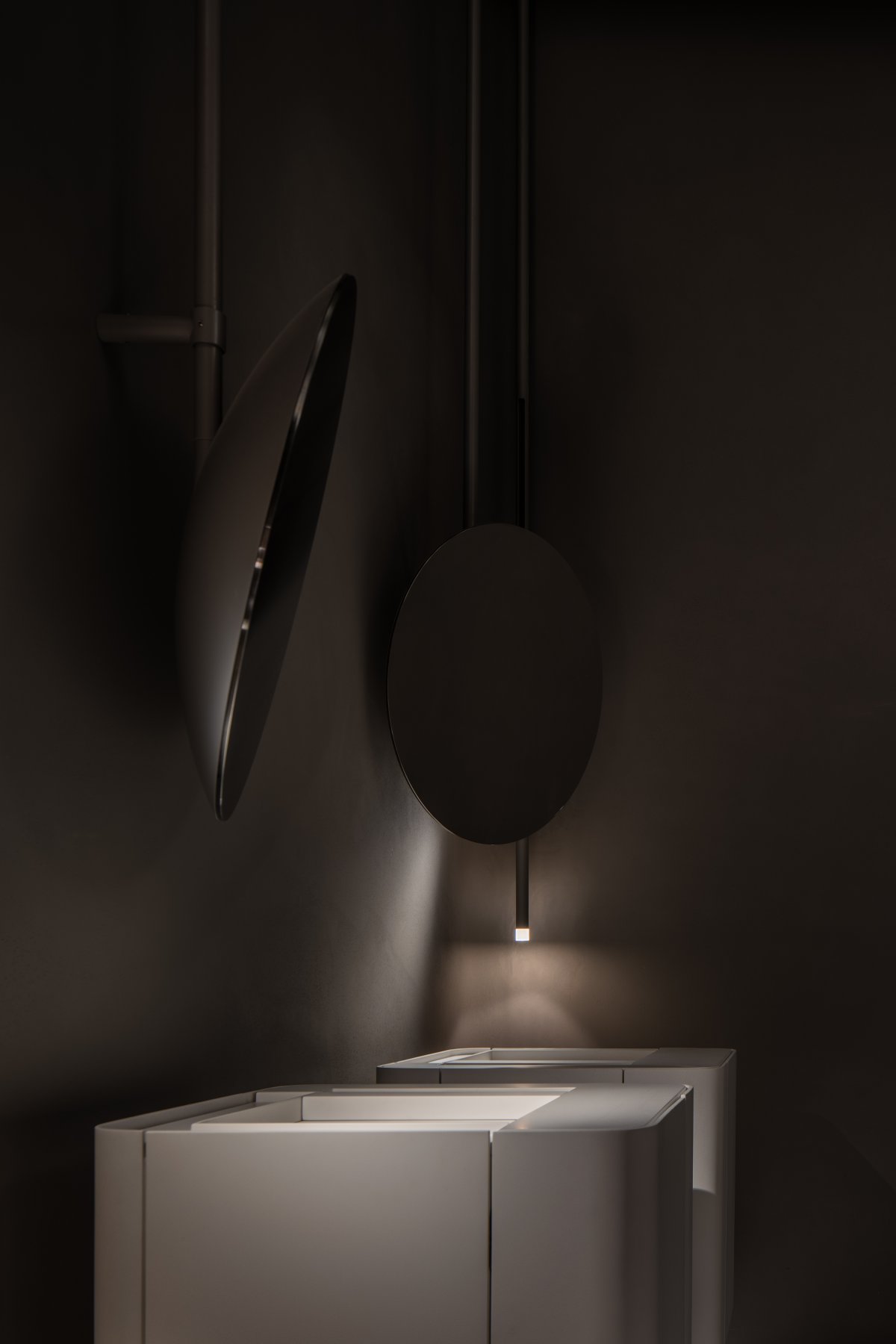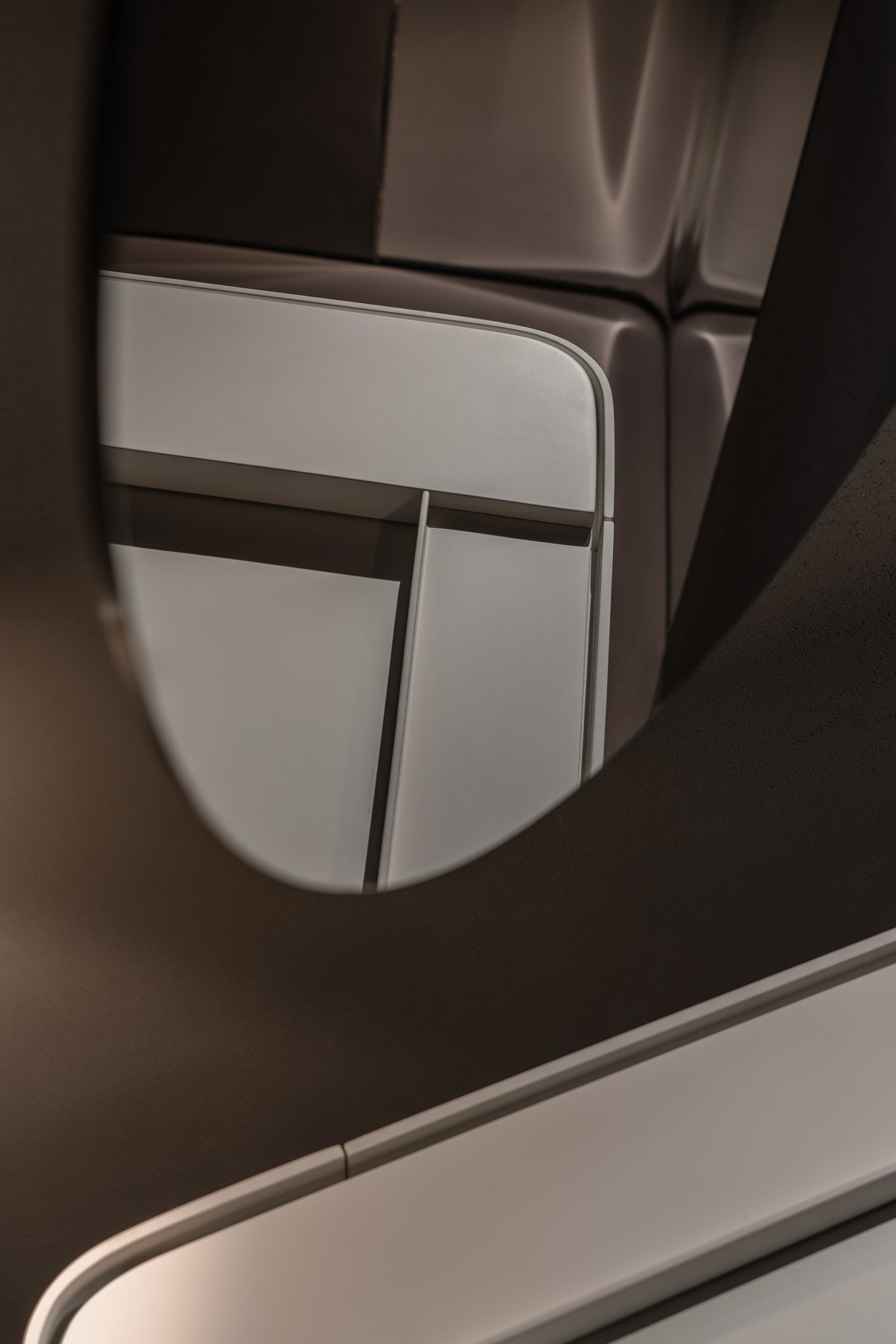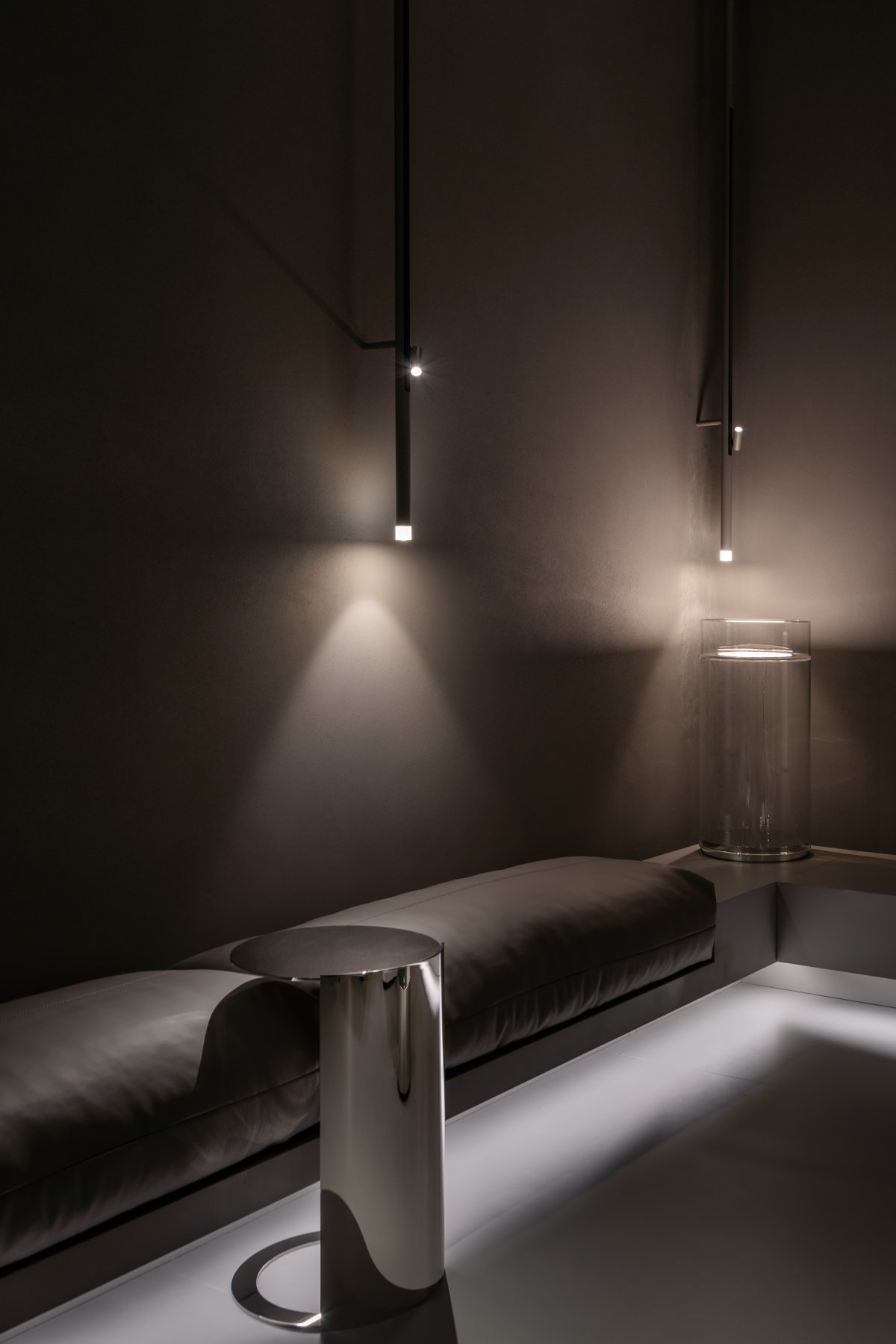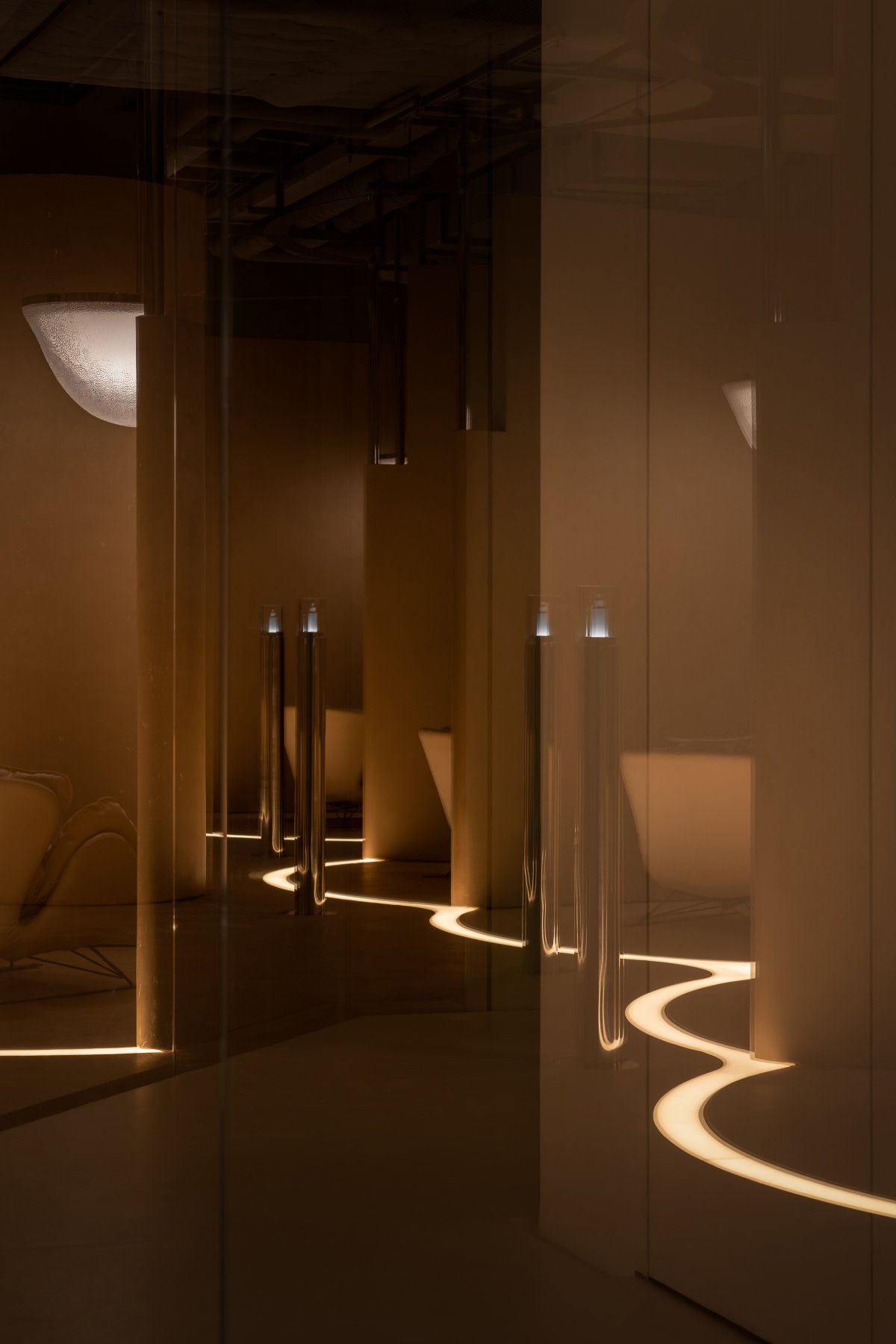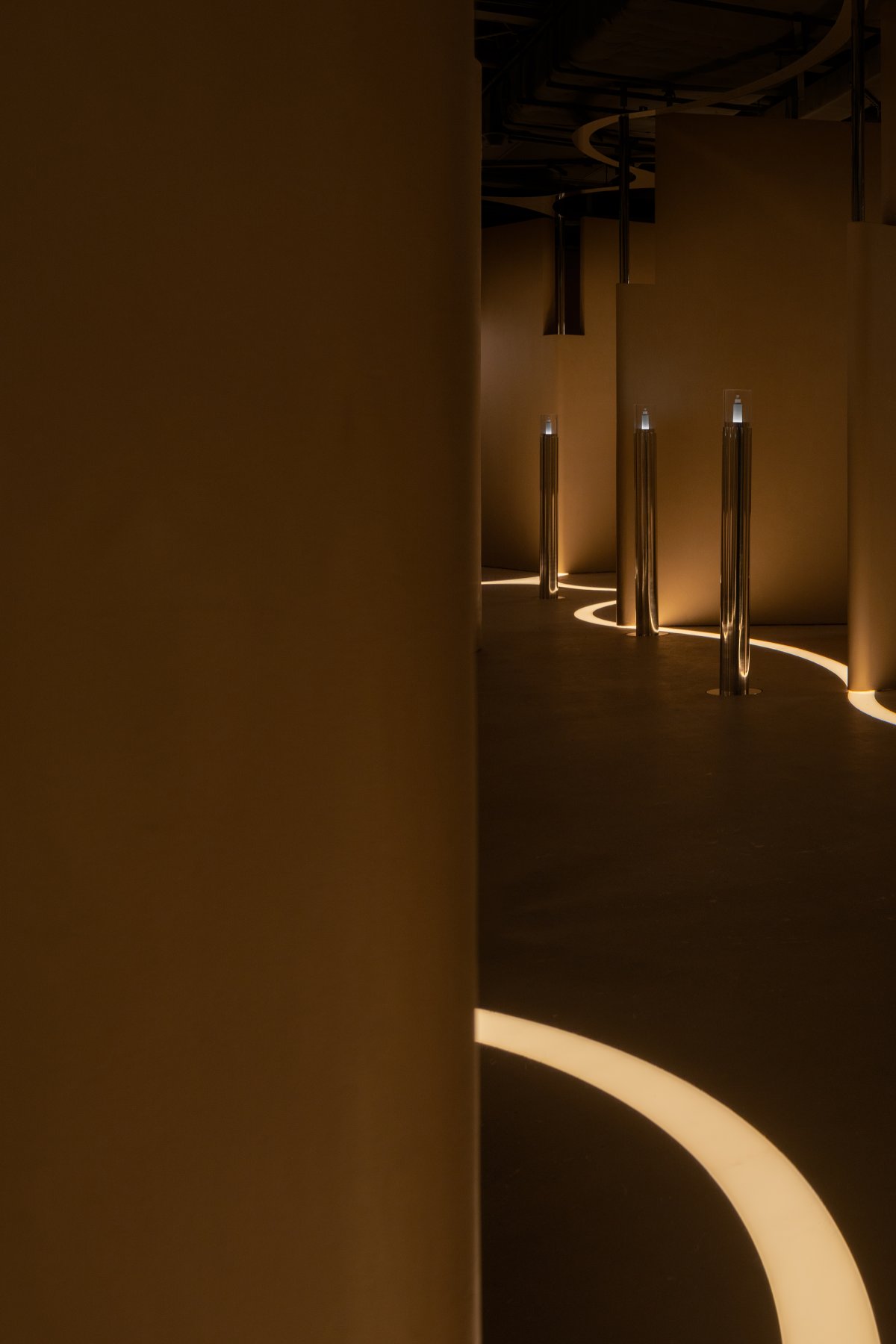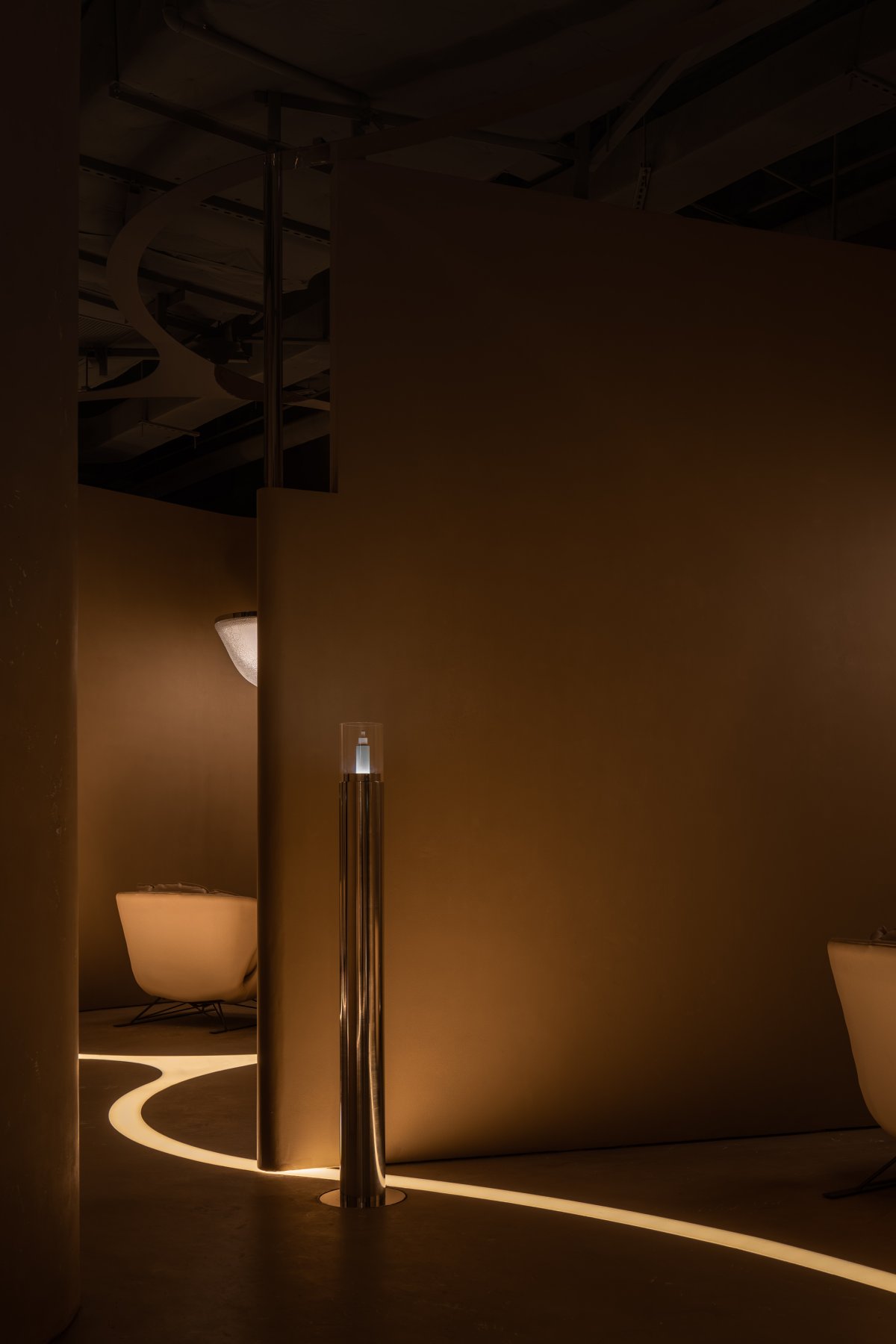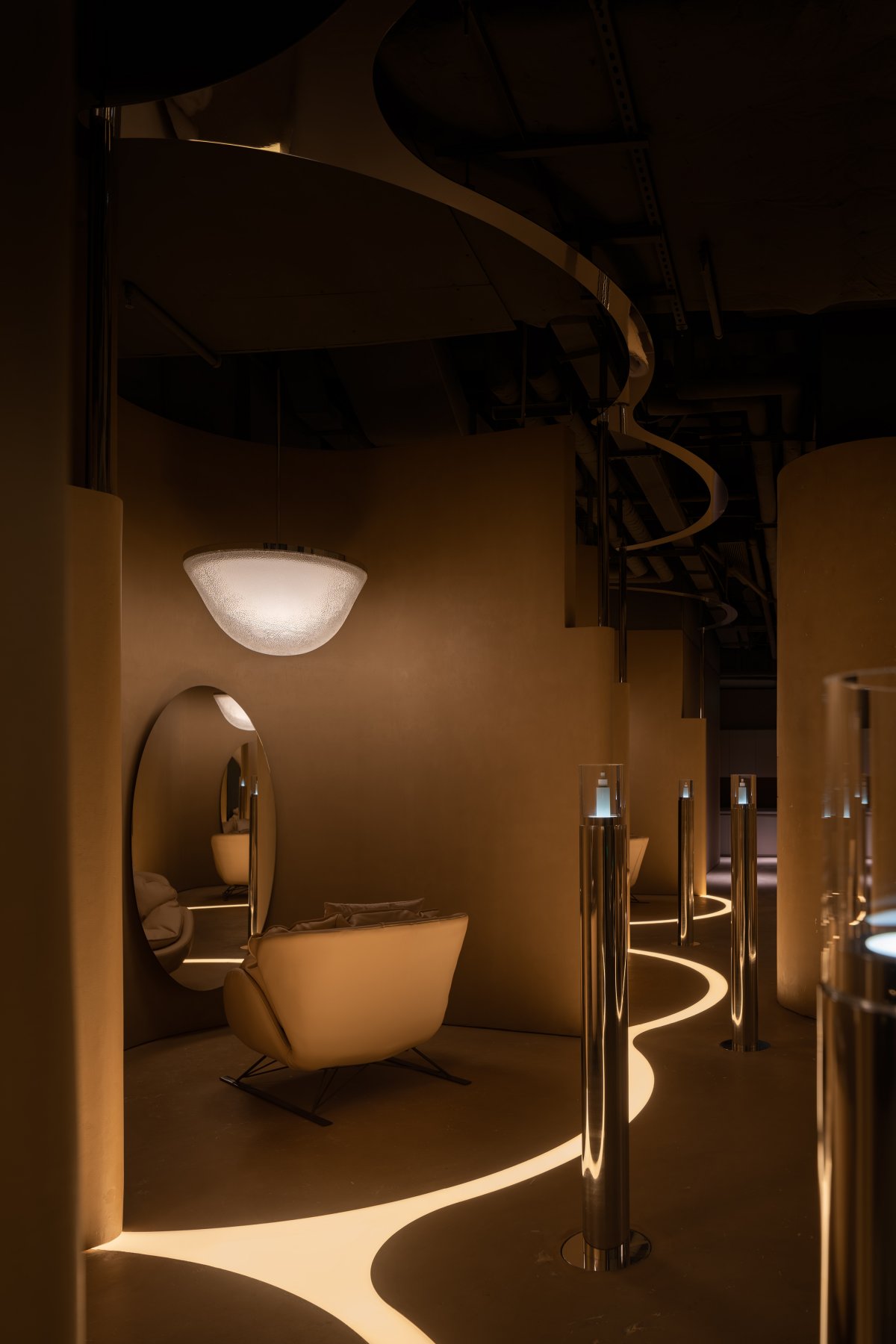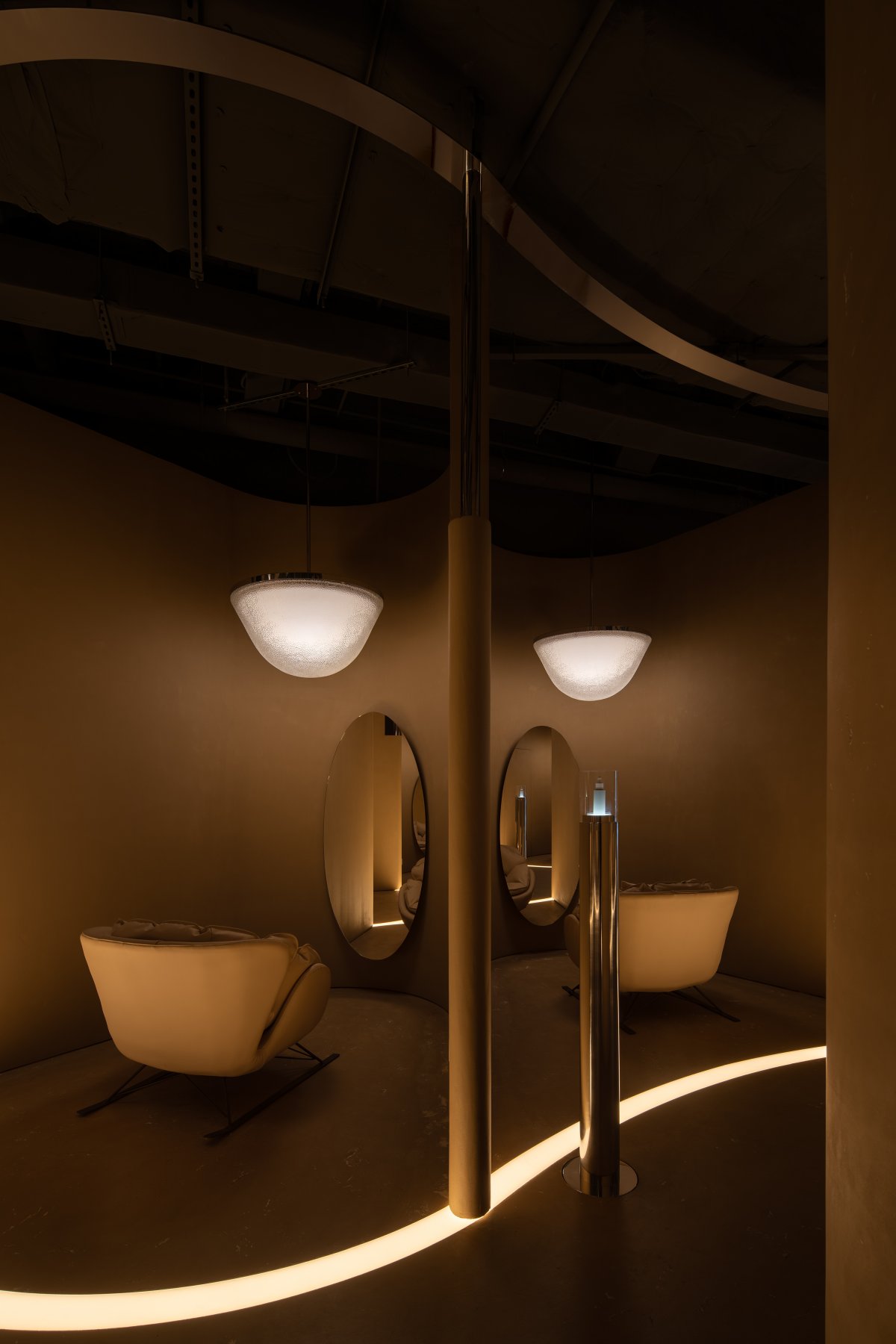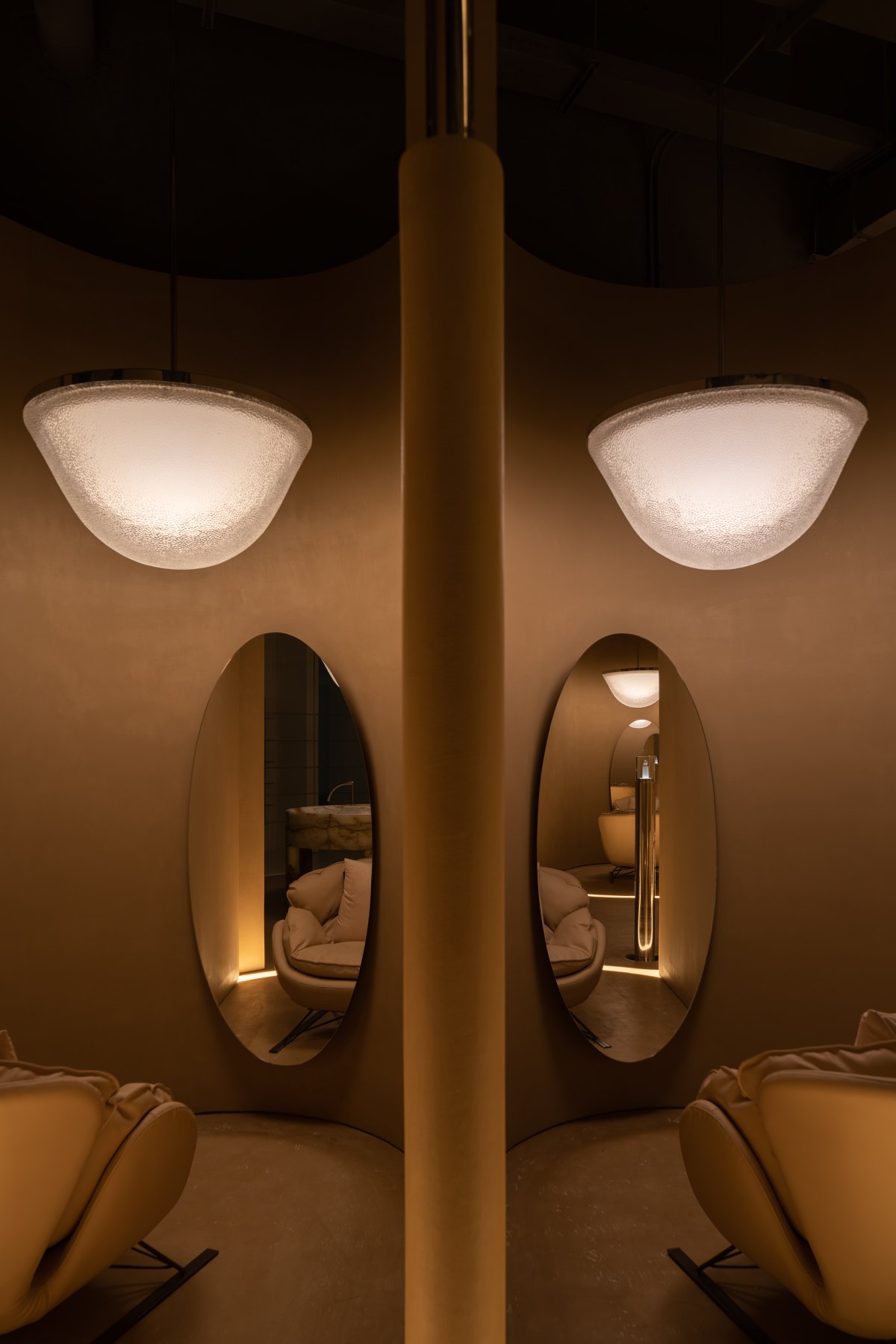
MEUNIER Technology Beauty once again invites DOMANI to open their third flagship store in China, named "CHRONONEN". Following the success of " Landscape in Fantasy " and "Bright Night and Gentle Dismemberment ", this project represents the third high-end art gallery concept store in the technology and medical beauty industry contributed by DOMANI.
Scence One/Foyer
Hourglass: A timekeeping device, also known as a sand clock or sandglass. An hourglass typically consists of two connected glass bulbs filled with a certain amount of sand, depending on the desired duration of time to be measured. Hourglasses were first discovered in China, Greece, Italy, and other places, and were used for navigation. In Australia, hourglasses have been used as timers for meeting agendas. The working principle of an hourglass is that sand flows from one bulb to another until all the sand has passed through. Because it is sealed, the amount of time it takes for the sand to flow is always the same, and some hourglasses have markings on the bulbs, allowing for accurate timekeeping.
Pendulum: A physical system consisting of a mass and a fixed length pendulum that undergoes motion due to the force of gravity. Under the influence of gravity, the pendulum swings along an arc, with zero velocity at the highest point and maximum velocity at the lowest point. This motion has a natural frequency, known as the pendulum frequency, which depends on the length of the pendulum and the acceleration due to gravity. Pendulums have been widely used in physics and science education to measure time and verify Newton's laws of motion.
The trajectory of a pendulum: It is a circular path that undergoes periodic changes. This is due to the nature of the pendulum's motion, which involves continuous swinging back and forth along an arc during one period. At the highest point of the swing, the pendulum's velocity is zero, but due to the force of gravity, it will begin to accelerate downwards. During this descent, the angle between the force of gravity and the velocity direction gradually decreases, causing the pendulum's speed to slow down. At the lowest point, the pendulum reaches its maximum velocity. Then, the pendulum begins to move in the opposite direction, gradually slowing down until it reaches the highest point again. This process creates an elliptical trajectory that undergoes periodic changes.
Scence One/Courtyard
Rainstick: Also known as a rain sound instrument, it may have originated from traditional tribes in Chile or Peru in South America for rain-making rituals. The traditional rainstick is shaped like a long rod with a hollow middle section, often made from plant stems or trunks (bamboo, cactus, etc.). Inside the tube, there are complex horizontal partitions added, and then filled with fine materials such as plant seeds, small iron beads, rubber beads, sand, etc. When shaken, the friction sound created by the movement of the filling material flowing through the partition in the tube resembles the sound of raindrops falling, hence the name.
Particle: A tiny object that occupies a small space and can have various physical or chemical properties, such as volume, density, or mass. They vary greatly in size or quantity, ranging from subatomic particles such as electrons, to microscopic particles such as atoms and molecules, to macroscopic particles such as powders and other particulate materials.
Sound wave: It is a form of energy that propagates through a medium by alternating pressure and rarefaction. Important physical quantities used to describe sound waves include sound pressure, particle velocity, particle displacement, and sound intensity. Sound waves propagate at a specific speed, which depends on the medium through which they travel.
Scence Three/Shadow area
Chiaroscuro: (Italian: chiaro, meaning "light," and scuro, meaning "dark") is a painting technique developed during the Renaissance period that creates three-dimensional effects by using strong contrasts of light and dark. Traditionally, paintings using chiaroscuro technique would use white watercolor to depict the highlights and the natural color of the paper or ink for the shadow areas. Painters such as Leonardo da Vinci, Caravaggio, and Rembrandt were known for their use of this technique. Later, the concept of chiaroscuro was also adopted by photography and the field of spatial design.
Qualia: It refers to the subjective and unique experience of consciousness, independent of external stimuli. The term "qualia" comes from the Latin adjective "quālis," meaning "of what sort" or "of what kind" (roughly translated as "...ness," such as redness, sweetness, etc.). Qualia is a term that is unfamiliar to many people, used to describe how familiar things and objects appear to us subjectively.
Scence Four/Flowing
Flowing Space: It does not consider space as a passive and static existence. Rather, space is symbolically divided both horizontally and vertically while maintaining maximum integration and continuity, allowing for transparency and minimal obstruction or barriers. To enhance the sense of flow, fluid, dynamic, and directionally guided forms are often used. Flowing space is one of the important characteristics of modern architecture, mainly manifested in the interpenetration and permeation of space inside and outside, as well as the view borrowed from inside to outside. The more essential flow refers to the accessibility, continuity, and rhythm of the internal circulation in architectural space.
- Interiors: Ann Yu × DOMANI
- Styling: A&V Exhibition Concepts
- Photos: Vincent Wu

